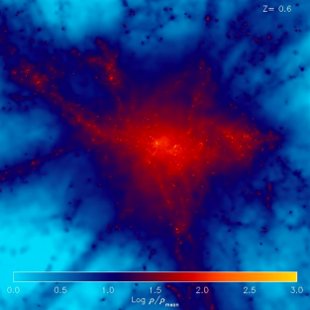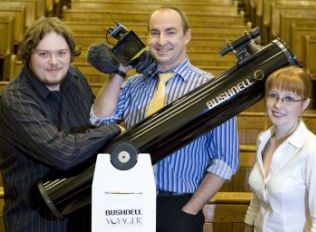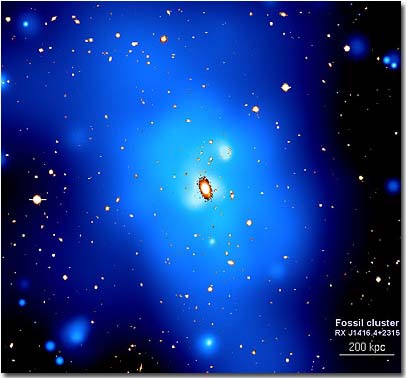News 09/04/2024
'Mass-gap' gravitational wave signal discovered by international scientists

The LIGO-Virgo-KAGRA (LVK) Collaboration, which includes astronomers and scientists from the University of Birmingham, has detected a remarkable gravitational-wave signal called GW230529.
The discovery was made in May 2023 and is thought to have been caused by the collision of what is most likely a neutron star with a compact object that is 2.5 to 4.5 times the mass of our Sun. What makes GW230529 so interesting to scientists is the mass of the heavier object, as it falls within a possible mass-gap between the heaviest known neutron stars and the lightest black holes.
The observation is being presented at the American Physical Society's meeting today (5th April) and is awaiting peer review. Neutron stars and black holes are both compact objects, the dense remnants of massive stellar explosions. Before the detection of gravitational waves, the masses of stellar-mass black holes were found using X-rays and the masses of neutron stars were found via radio observations. These measurements fell into two distinct ranges with a gap between them from about 2 to 5 times the mass of our Sun. Over the years, a small number of measurements have encroached on the mass-gap, which remains highly debated among astrophysicists.
Dr Geraint Pratten, Royal Society University Research Fellow at the Institute for Gravitational Wave Astronomy, University of Birmingham, was part of the team that analysed the findings. He explained: "GW230529 is an extremely exciting event that was produced by the merger of two compact objects. Our analysis shows that the heavier object had a mass about 2.5 - 4.5 times that of the Sun whereas the lighter object was only about 1.2 - 2.0 as massive as the Sun. We could not determine with certainty if the compact objects are black holes or neutron stars, as the gravitational wave signal does not provide enough information. However, it is very likely that this was the merger between a black hole and a neutron star. Either way, we are very confident that the heavier object falls within the mass-gap. Our analysis is already providing important insights, allowing us to further refine our understanding of the astrophysical processes behind these mergers."
Gravitational-wave observations have now provided almost 200 measurements of compact-object masses. Of these, only one other merger may have involved a mass-gap compact object - the signal GW190814 came from the merger of a black hole with a compact object exceeding the mass of the heaviest known neutron stars and possibly within the mass-gap.
GW230529 is the first gravitational-wave detection of a mass-gap object paired with a neutron star and has important implications for our understanding of the formation and evolution of compact binaries, as well as possible electromagnetic counterparts to these mergers.
Dr Patricia Schmidt, Associate Professor at the Institute for Gravitational Wave Astronomy, said: "The most likely interpretation of this event is the merger of a black hole with a neutron star. As their masses are rather similar, we also expect the emission of electromagnetic radiation in such a collision. This exciting observation could significantly boost the prospects for detecting EM counterparts from neutron star - black hole mergers in the future."
Thanks to improvements made to the gravitational wave detectors, the cyberinfrastructure and the analysis software, the LIGO-Virgo-KAGRA researchers were able to detect signals from further away and extract more information about the extreme events which caused the waves. Just five days into the fourth observing run GW230529 passed by the LIGO Livingston detector and within minutes, the data from the detector was analyzed and an alert was released publicly announcing the signal. Astronomers receiving the alert were informed that a neutron star and a black hole most likely merged about 650 million light-years from Earth.
Dr Pratten concluded: "In addition to GW230529, we have identified about 80 other significant event candidates to investigate. We expect that by February 2025, when the fourth observing run ends, we will have observed more than 200 gravitational-wave signals. Future detections of similar events, especially those accompanied by bursts of electromagnetic radiation, could hold the key to solving this cosmic mystery of mass-gap and further our understanding of the universe."
News 26/01/2024
University of Birmingham to play key role in first gravitational-wave observatory in space

black holes are shown in the centre and the emitted gravitational wave
is shown in blue. Credit: Geraint Pratten.
The University of Birmingham will collaborate on the development of the first gravitational-wave observatory in space, which may go into orbit in mid-2030.
Today, the European Space Agency's (ESA) Science Programme Committee (SPC) has given the green light for LISA, the Laser Interferometer Space Antenna to progress to the construction phase.
The UK has a major involvement in the LISA mission, with significant contributions to the instrument hardware and the on-ground data processing and analysis, supported by funding from the UK Space Agency (UKSA), which has agreed participation in the mission in principle.
The University of Birmingham will be leading the UK contribution to the LISA Science Ground Segment in collaboration with the University of Glasgow, the University of Portsmouth, the University of Southampton, and the University of Cambridge. This will include developing robust methods for data analysis and simulation, extracting gravitational-wave signals from the data and understanding their properties, all of which will be essential to maximising the scientific return of the mission.
The UK Astronomy Technology Centre (UK ATC), in collaboration with the University of Glasgow, will lead the UK's hardware contribution to LISA - the design and construction of the ultra-precision optical benches that sit at the heart of each LISA spacecraft.
Alberto Vecchio, Professor of Astrophysics at the University of Birmingham, and Principal Investigator of the UK contribution to the LISA Science Ground Segment, said: "LISA is a unique space observatory to precisely map the evolution of the Universe by tracing the pairing up and mergers of black holes from thousands to millions of solar masses. LISA will unveil these cosmic dances all the way to the edge of the Universe and discover tens of thousands of compact objects we know nothing about today. This is going to be a breathtaking journey across the cosmos with so many surprises."
"For many years the UK has been at the forefront of modelling gravitational wave sources and developing sophisticated analysis techniques for the mission and we are thrilled to be working with our colleagues from all over the world to make LISA a success."
LISA will be the first gravitational wave observatory in space and will consist of three spacecraft launched on the same rocket. During their 18-month voyage to their new home 60-70 million kilometres from Earth, the spacecraft will diverge until they reach their final positions forming an equilateral triangle 2.5 million kilometres from each other. It will detect gravitational radiation in the yet unexplored window between 0.1 mHz and 1 Hz, waves that cannot be detected by ground-based detectors.
Dr Geraint Pratten, a Royal Society University Research Fellow at the University of Birmingham, said: "The adoption of LISA is a groundbreaking moment in astronomy. LISA will allow us to observe a wealth of new phenomena, including the mergers of black holes that can be billions of times heavier than our sun. It will revolutionise our understanding of the formation and evolution of galaxies throughout the Universe. This is a truly international collaboration, and it is exciting for the UK to play a pivotal role in developing the analytical models and tools to analyse these gravitational wave signals."
Unique to LISA, is the detection of gravitational waves from stellar black holes swirling around massive ones in galactic nuclei to probe the geometry of spacetime and test gravity in its foundations. LISA will also detect binary and multiple compact objects in our Milky Way galaxy to tell us about stellar binary evolution, and "see" the Galaxy beyond the Galactic Centre, including objects invisible to all other astronomical instruments.
Dr Hannah Middleton, a Research Fellow at the University of Birmingham, and Deputy Project Manager of the LISA Distributed Data Processing Centre, said: "This is an exciting step for the LISA mission. LISA will enable us to observe gravitational waves at frequencies that we have never been able to detect before. There are types of signals we expect to see, but hopefully there will be some surprises too."
The LISA Consortium is a large international collaboration that combines the resources and expertise of scientists in countries all over the world. Together with ESA, its member states, and NASA, the LISA Consortium is working to bring the LISA Mission to fruition.
Karsten Danzmann, Lead of the LISA Consortium, Max Planck Institute for Gravitational Physics and Leibniz University Hannover said: "With the Adoption decision, LISA is now firmly established in ESA's programme of missions. We are looking forward to realising LISA in a close collaboration of ESA, NASA, ESA member states and the wider LISA Consortium."
Carole Mundell, Director of Science at the ESA, said: "This trailblazing mission will take us to the next level in a really exciting area of space science and keep European scientists at the forefront of gravitational wave research."
News 07/11/2023
Massive space explosion observed creating elements needed for life
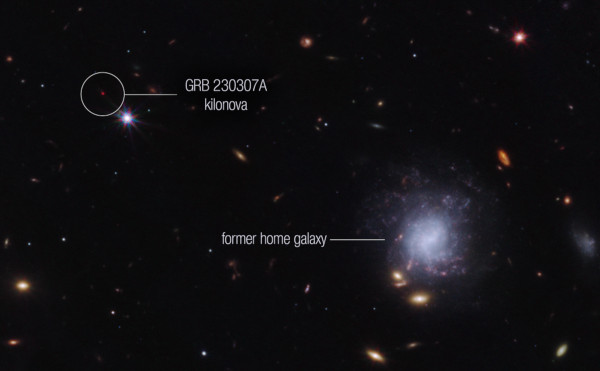
before merging. Credit: NASA, ESA, CSA, STScI, Andrew Levan (IMAPP, Warw).
Scientists have observed the creation of rare chemical elements in the second-brightest gamma-ray burst ever seen.
Researchers examined the exceptionally bright gamma-ray burst GRB 230307A, which was caused by a neutron star merger. The explosion was observed using an array of ground and space-based telescopes, including NASA's James Webb Space Telescope, Fermi Gamma-ray Space Telescope, and Neil Gehrels Swift Observatory.
Publishing their findings in Nature (25 Oct), the international research team which included experts from the University of Birmingham, reveal that they found the heavy chemical element tellurium, in the aftermath of the explosion.
Other elements such as iodine and thorium, which are needed to sustain life on earth, are also likely to be amongst the material ejected by the explosion, also known as a kilonova.
Dr Ben Gompertz, Assistant Professor of Astronomy at the University of Birmingham, and co-author of the study explains: "Gamma-ray bursts come from powerful jets travelling at almost the speed of light - in this case driven by a collision between two neutron stars. These stars spent several billion years spiralling towards one another before colliding to produce the gamma-ray burst we observed in March this year. The merger site is the approximate length of the Milky Way (about 120,000 light-years) outside of their home galaxy, meaning they must have been launched out together.
"Colliding neutron stars provide the conditions needed to synthesise very heavy elements, and the radioactive glow of these new elements powered the kilonova we detected as the blast faded. Kilonovae are extremely rare and very difficult to observe and study, which is why this discovery is so exciting."
GRB 230307A was one of the brightest gamma-ray bursts ever observed - over a million times brighter than the entire Milky Way Galaxy combined. This is the second time individual heavy elements have been detected using spectroscopic observations after a neutron star merger, providing invaluable insight into how these vital building blocks needed for life are formed.
Lead author of the study Andrew Levan, Professor of Astrophysics at Radboud University in the Netherlands, said: "Just over 150 years since Dmitri Mendeleev wrote down the periodic table of elements, we are now finally in the position to start filling in those last blanks of understanding where everything was made, thanks to the James Webb Telescope."
GRB 230307A lasted for 200 seconds, meaning it is categorised as a long-duration gamma-ray burst. This is unusual as short gamma-ray bursts, which last less than two seconds, are more commonly caused by neutron star mergers. Long gamma-ray bursts like this one are usually caused by the explosive death of a massive star.
The researchers are now seeking to learn more about how these neutron star mergers work and how they power these huge element-generating explosions.
Dr Samantha Oates, a co-author of the study while a postdoctoral research fellow at the University of Birmingham (now a lecturer at Lancaster University) said: "Just a few short years ago discoveries like this one would not have been possible, but thanks to the James Webb Space Telescope we can observe these mergers in exquisite detail."
Dr Gompertz concludes: "Until recently, we didn't think mergers could power gamma-ray bursts for more than two seconds. Our next job is to find more of these long-lived mergers and develop a better understanding of what drives them - and whether even heavier elements are being created. This discovery has opened the door to a transformative understanding of our universe and how it works."
News 01/11/2023
PhD Applications open !

The Astrophysics and Space Research Group and the Institute for Gravitational Wave Astronomy invites applications for PhD positions starting in September 2024. We offer cutting-edge research on a variety of different topics in a vibrant environment in the heart of the Midlands! Full details, including links to the online application form are available at http://www.sr.bham.ac.uk/phd/index.php. The application deadline is January 15, 2024. We are looking forward to your applications!
News 04/07/2023
Hints of a new gravitational wave murmur

Tantalising evidence of elusive low-frequency gravitational waves has been revealed by a European team of scientists studying data collected over two decades.
The results, which include analysis carried out by astronomers at the University of Birmingham and Manchester, are published today in Astronomy and Astrophysics.
Ultra-low frequency gravitational waves carry information about some of the best kept secrets of the Universe including the formation of binary systems of super-massive black holes and events that may have taken place when the Universe was in its infancy, just a few seconds old.
Scientists from the European Pulsar Timing Array, in collaboration with Indo-Japanese astronomers from the Indian Pulsar Timing Array have been searching for these signals using six of the world's most powerful radio telescopes. The telescopes monitor radio signals from rotating neutron stars, called pulsars.
By harnessing the combined power of 25 of these pulsars, the team have been able to form a galactic sized gravitational-wave detector which measures the exact arrival time of the radio signals from pulsars. As the signals travel through space and time, the presence of gravitational waves affects their path, creating characteristic irregularities.
The analysis of this unprecedented data set has revealed irregularities which are consistent with the effect produced by gravitational waves at ultra-low frequency, waves that oscillate with periods between one and ten years.
Professor Alberto Vecchio, of the University of Birmingham's Institute for Gravitational Wave Astronomy, commented: "The results presented today mark the beginning of a radically new journey into the Universe to unveil some of its mysteries. Our analysis reveals a common signal which has been persistent throughout the many years of monitoring these pulsars, as if these cosmic clocks are pitching and rolling in the waves of space time.
"Although we are not able yet to confirm definitively the presence of ultra-low frequency gravitational waves, the presence of this common signal across all the pulsars in the array is consistent with what astrophysicists expect."
The European Pulsar Timing Array (EPTA) has combined the observations of 25 millisecond pulsars, spanning over 25 years of regular observations taken with five of the largest radio telescopes in Europe: the Lovell Telescope of the Jodrell Bank Observatory in the United Kingdom, the 100-m Effelsberg Radio in Germany, the Nancay Radio Telescope in France, the Sardinia Radio Telescope in Italy and the Westerbork Radio Synthesis Telescope in the Netherlands. To complement this data set, also 10 years of data acquired at the Giant Metrewave Radio Telescope by the Indian Pulsar Timing Array have been included in the analysis.
Dr Paul Brook, a post-doctoral researcher at the University of Birmingham's Institute for Gravitational Wave Astronomy, who has been heavily involved in the analysis of the EPTA data commented: "It's taken the EPTA 25 years of incredibly meticulous pulsar observations to finally see some evidence of the gravitational wave background. Though predicted by his general theory of relativity, the fact that Einstein thought gravitational waves were too quiet to ever be observed conveys the magnitude of the undertaking."
The results from the EPTA are also consistent with the results of analyses using data sets collected at different radio telescope monitoring other pulsars by the Australian (PPTA), North-American (NANOGrav) and Chinese pulsar timing array collaborations that are also released today.
The gold-standard in physics to claim the detection of a new phenomenon is that the result of the experiment has a probability of less than one time in a million of occurring by chance. The results reported by EPTA do not yet meet this gold-standard, but work is already in progress to combine data sets from the four collaborations - EPTA, InPTA, PPTA and NANOGrav - under the auspices of the International Pulsar Timing Array to create an array consisting of over 100 pulsars.
This combined effort may allow this goal to be reached soon. "This new journey has just begun," said Professor Vecchio. "Listening to the gravitational broadcast of the Universe with even better telescopes monitoring a growing number of pulsars will surely reveal many surprises in the future."
News 28/03/2023
NASA missions study what may be a 1-In-10,000-year gamma-ray burst
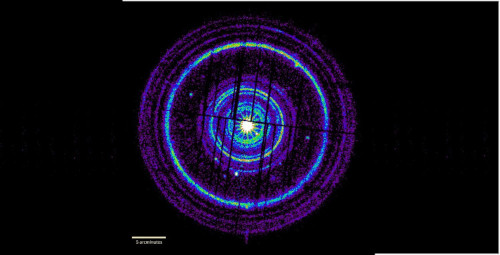
First observed in October 2022, as an intense pulse of radiation sweeping through the solar system, the burst, named GRB 221009A, triggered detectors on numerous spacecraft, and observatories around the globe followed up. After combing through all of this data, astronomers, including experts at the University of Birmingham, can now characterize just how bright it was and better understand its scientific impact.
Papers describing their results are published today [March 28 2023] in a focus issue of The Astrophysical Journal Letters, which conclude GRB 221009A was the brightest burst of X-ray and gamma-ray energies to occur since human civilisation began.
Astronomers from the University of Birmingham were involved in analysing data on GRB 221009A from the James Webb Space Telescope (JWST), its first use for this kind of study, and from the Ultra-violet/Optical Telescope onboard NASA"s Neil Gehrels Swift Observatory (Swift). With this type of GRB, astronomers expect to find a brightening supernova a few weeks later, but so far it has proven elusive.
Dr Samantha Oates, a postdoctoral research fellow in the University of Birmingham's School of Physics and Astronomy, was involved in analysing optical/UV data from Swift.
"From our data, this GRB looked ordinary in terms of its optical brightness," she explained. "However, because it occurred behind our galaxy, the vast amount of dust along its line of sight would have diminished its brightness. This dust might explain why the supernova hasn't been found. If it had been observed at another point in the sky, the GRB would have appeared around 40 times brighter in the visual band - much brighter than any other GRB observed to date."
Dr Benjamin Gompertz, also of the University of Birmingham, was part of the team using JWST to look for evidence of heavy elements within the burst.
He said: "GRBs like 221009A are powered by very massive stars running out of fuel and collapsing to black holes under their own gravity. The extremely hot material left behind by this process might be an important birth site for heavy elements like gold. Observations with JWST can detect tell-tale signatures of new heavy elements forming, teaching us about the cosmic origins of some of the most massive elements found in nature."
News 10/12/2022
PhD Applications open !

The Astrophysics and Space Research Group and the Institute for Gravitational Wave Astronomy invites applications for PhD positions starting in September 2023. We offer cutting-edge research on a variety of different topics in a vibrant environment in the heart of the Midlands! Full details, including links to the online application form are available at http://www.sr.bham.ac.uk/phd/index.php. The application deadline is January 15, 2023. We are looking forward to your applications!
News 02/09/2022
Looking inside a neutron star
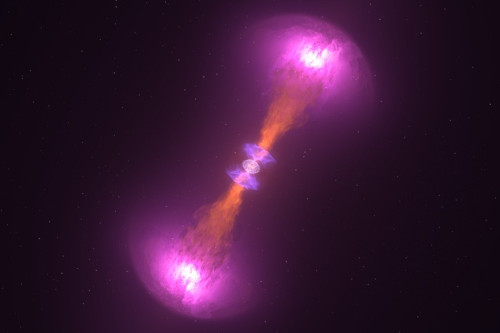
A neutron star merger. Credit: NASA's Goddard Space Flight Center/CI Lab
Oscillations in binary neutron stars before they merge could have big implications for the insights scientists can glean from gravitational wave detection.
Researchers at the University of Birmingham have demonstrated the way in which these unique vibrations, caused by the interactions between the two stars' tidal fields as they get close together, affect gravitational-wave observations. The study is published in Physical Review Letters.
Taking these movements into account could make a huge difference to our understanding of the data taken by the Advanced LIGO and Virgo instruments, set up to detect gravitational waves - ripples in time and space - produced by the merging of black holes and neutron stars.
The researchers aim to have a new model ready for Advanced LIGO's next observing run and even more advanced models for the next generation of Advanced LIGO instruments, called A+, which are due to begin their first observing run in 2025.
Since the first gravitational waves were detected by the LIGO Scientific Collaboration and Virgo Collaboration in 2016, scientists have been focused on advancing their understanding of the massive collisions that produce these signals, including the physics of a neutron star at supra nuclear densities.
Dr Geraint Pratten, of the Institute for Gravitational Wave Astronomy at University of Birmingham, is lead-author on the paper. He said: "Scientists are now able to get lots of crucial information about neutron stars from the latest gravitational wave detections. Details such as the relationship between the star's mass and its radius, for example, provide crucial insight into fundamental physics behind neutron stars. If we neglect these additional effects, our understanding of the structure of the neutron star as a whole can become deeply biased."
Dr Patricia Schmidt, co-author on the paper and Associate Professor at the Institute for Gravitational Wave Astronomy, added: "These refinements are really important. Within single neutron stars we can start to understand what's happening deep inside the star's core, where matter exists at temperatures and densities we cannot produce in ground-based experiments. At this point we might start to see atoms interacting with each other in ways we have not yet seen - potentially requiring new laws of physics."
The refinements devised by the team represent the latest contribution from the University of Birmingham to the Advanced LIGO programme. Researchers in the University's Institute for Gravitational Wave Astronomy have been deeply involved in design and development of the detectors since the programme's earliest stages. Looking ahead, PhD student Natalie Williams is already progressing work on calculations to further refine and calibrate the new models.
News 14/04/2022
Faculty positions

The Institute for Gravitational Wave Astronomy at the University of Birmingham, UK, invites applications for several faculty positions
- Assistant/Associate Professor in Experimental Physics (job reference number 36681): the focus of this position is on the broad area of gravitational-wave detectors and technology development relevant to gravitational-wave instruments.
- Assistant/Associate Professor in Gravitational-Wave and Multi-messenger Astronomy (job reference number 59714): the focus of this position is on any area relevant to gravitational-wave observations and multi-messenger astronomy.
- Assistant Professor in Astrophysics (job reference number 59546): The focus of the position is on areas of astrophysics and/or general relativity relevant to gravitational-wave observations.
The Institute for Gravitational Wave Astronomy is one of the leading research centres world-wide focusing on gravitational wave astronomy and related areas. The Institute has a rich portfolio of research activities in experimental physics, instrumentation, data analysis and observations, theoretical astrophysics and general relativity, and transients and multi-messenger astronomy. Institute members play active roles in the GEO Collaboration and the LIGO Scientific Collaboration - including the development of next generation ground-based gravitational-wave observatories - the LISA Consortium, the European and International Pulsar Timing Array Collaboration, and surveys such as ENGRAVE, ePESSTO+ and LSST. The Institute has excellent laboratory and computer facilities.
The Institute is looking for ambitious candidates with a diverse and vibrant research portfolio in areas relevant to gravitational-wave astronomy. Applicants in all relevant fields of physics, astronomy, mathematics or engineering are encouraged to apply.
The Institute is affiliated with the Astrophysics and Space Research group, one of the eight research groups active in the School of Physics and Astronomy, which has about 50 permanent academic staff. The group has a strong track record of attracting research funding. It is supported by a variety of grants from several sources, including STFC, EPSRC, UKSA, ERC, the Royal Society and the Leverhulme Trust.
The deadline for application is June 3rd, 2022.
Applicants should submit their application through the University of Birmingham job portal [www.birmingham.ac.uk]
As part of their application, applicants should include a CV with a list of publications, and a two-page statement covering research interests and plans.
Applicants should also arrange for 3 reference letters to be sent to Ms Joanne Cox at j.s.cox[AT]bham.ac.uk by June 3rd, 2022.
For further information and informal inquiries please contact:
- Dr Denis Martynov D.Martynov[AT]bham.ac.uk
- Dr Christopher Moore (C.J.Moore[AT]bham.ac.uk
- Dr Matt Nicholl (M.Nicholl.1[AT]bham.ac.uk
- Dr Patricia Schmidt (P.Schmidt[AT]bham.ac.uk
- Prof. Alberto Vecchio (a.vecchio[AT]bham.ac.uk
The University of Birmingham is an equal opportunity employer. The School of Physics and Astronomy is an Athena SWAN Silver Award holder and JUNO Champion, welcomes people from all backgrounds and is committed to fostering an inclusive environment where diversity is at the heart of who we are. We encourage applications from all qualified applicants; those from minority groups who are under-represented in these disciplines are particularly welcome.
News 07/02/2022
Royal Astronomical Society honours Birmingham scientist with Fowler Award
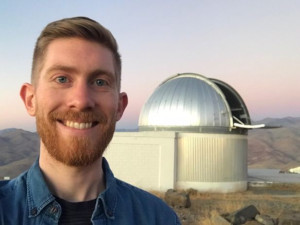
A University of Birmingham scientist has been recognised by the Royal Astronomical Society for early career achievements in astronomy.
Dr Matt Nicholl, in the School of Physics and Astronomy, has received the Fowler Award, made to individuals in recognition of noteworthy contributions to the field within 10 years of completing their PhD.
Dr Nicholl was recognised for the breakthroughs he has made in our understanding of astronomical transients - objects whose existence endures for just a short time, from milliseconds to several years. In particular, Dr Nicholl works on superluminous supernovae, demonstrating that these objects come from massive stars. His study of the first-detected kilonova - the afterglow from a neutron star merger - led to the development of methods to determine the radius of a neutron star.
The Fowler Award was announced by Royal Astronomical Society among the 2022 winners of its awards, medals and prizes. Each year the RAS recognises significant achievement in the fields of astronomy and geophysics through these awards, encompassing different types of talent from research to education and outreach. The announcements were made at the Ordinary Meeting of the Society held on Friday 14 January 2022.
Dr Nicholl said: "The Fowler award is a real honour and a chance to reflect on a lot of exciting science from the last few years. I'm fortunate to be around at a time of amazing growth in our ability to search the sky for new transient sources, and witness the birth of a new field in gravitational wave astronomy. It's been a joy and a privilege to play around with all this data and learn more about stars colliding, disrupting and exploding, and the black holes and neutron stars they leave behind."
"I'm so grateful to the RAS, for recognising my work and the importance of studying these sources, and to all my current and former colleagues in Birmingham, Edinburgh, Harvard and Belfast, and many collaborators around the world. Hopefully this is just the beginning of a long period of discovery!" The results of a comprehensive search for a background of ultra-low frequency gravitational waves has been announced by an international team of astronomers including scientists from the Institute for Gravitational Wave Astronomy at the University of Birmingham.
News 17/01/2022
International collaboration offers new evidence of a gravitational wave background
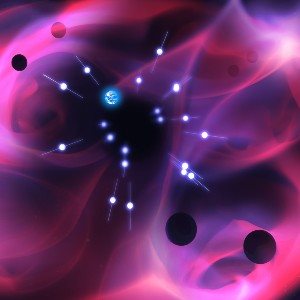
The results of a comprehensive search for a background of ultra-low frequency gravitational waves has been announced by an international team of astronomers including scientists from the Institute for Gravitational Wave Astronomy at the University of Birmingham.
These light-year-scale ripples, a consequence of Einstein's theory of general relativity, permeate all of spacetime and could originate from mergers of the most massive black holes in the Universe or from events occurring soon after the formation of the Universe in the Big Bang. Scientists have been searching for definitive evidence of these signals for several decades.
The International Pulsar Timing Array (IPTA), joining the work of several astrophysics collaborations from around the world, recently completed its search for gravitational waves in their most recent official data release, known as Data Release 2 (DR2), published in Monthly Notices of the Royal Astronomical Society.
This data set consists of precision timing data from 65 millisecond pulsars - stellar remnants which spin hundreds of times per second, sweeping narrow beams of radio waves that appear as pulses due to the spinning - obtained by combining the independent data sets from the IPTA's three founding members: The European Pulsar Timing Array (EPTA), the North American Nanohertz Observatory for Gravitational Waves (NANOGrav), and the Parkes Pulsar Timing Array in Australia (PPTA).
These combined data reveal strong evidence for an ultra-low frequency signal detected by many of the pulsars in the combined data. The characteristics of this common-among-pulsars signal are in broad agreement with those expected from a gravitational wave "background".
The gravitational wave background is formed by many different overlapping gravitational-wave signals emitted from the cosmic population of supermassive binary black holes (i.e. two supermassive black holes orbiting each other and eventually merging) - similar to background noise from the many overlapping voices in a crowded hall.
This result further strengthens the gradual emergence of similar signals that have been found in the individual data sets of the participating pulsar timing collaborations over the past few years.
Professor Alberto Vecchio, Director of the Institute for Gravitational Wave Astronomy at the University of Birmingham, and member of the EPTA, says: "The detection of gravitational waves from a population of massive black hole binaries or from another cosmic source will give us unprecedented insights into how galaxy form and grow, or cosmological processes taking place in the infant universe. A major international effort of the scale of IPTA is needed to reach this goal, and the next few years could bring us a golden age for these explorations of the universe."
"This is a very exciting signal! Although we do not have definitive evidence yet, we may be beginning to detect a background of gravitational waves," says Dr Siyuan Chen, a member of the EPTA and NANOGrav, and the leader of the IPTA DR2 search and publication.
News 09/12/2021
Black holes of 'all shapes and sizes' in new gravitational wave catalogue
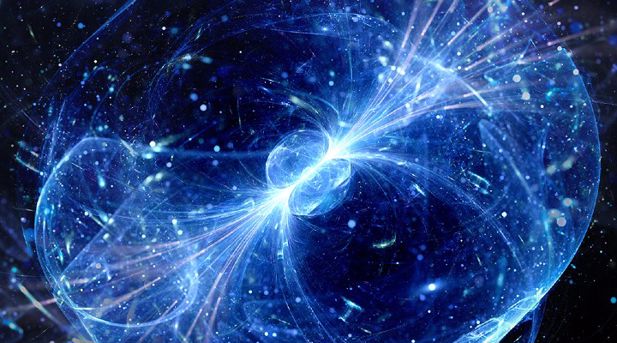
The largest catalogue of gravitational wave events ever assembled has been released , with dozens of ripples in space time captured by a global network of detectors. The aftershocks of huge astronomical events were picked up by a world-wide team of scientists, with leadership from the UK. Experts from the University of Birmingham's Institute for Gravitational Wave Astronomy were part of the parameter estimation team, responsible for characterising the gravitational wave sources. The team has detected a further 35 gravitational wave events, bringing the total number of observed events since detection began to 90.
An international effort
The catalogue updates the list of all gravitational-wave events observed to date with events observed between November 2019 and March 2020, using international detectors:
- The two Advanced Laser Interferometer Gravitational-Wave Observatory (LIGO) detectors in Louisiana and Washington state in the US.
- Advanced Virgo detector in Italy.
Scientists from 12 different universities across the UK are involved in the LIGO Scientific Collaboration, with many taking leading roles from detector calibration to data analysis. The UK's contribution to the collaborations is funded by the Science and Technology Facilities Council (STFC).
What did we see?
Of the 35 events detected, 32 of those were most likely to be black hole mergers - two black holes spiralling around each other and finally joining together, an event which emits a burst of gravitational waves. Several of the black holes formed from these mergers exceed 100 times the mass of our Sun, and are classed as intermediate-mass black holes. This type of black hole has long been theorised by astrophysicists, and has now been proven to exist thanks to gravitational wave observations. Two of the 35 events spotted were likely to be neutron stars and black holes merging - a much rarer event, and one that was only discovered in the most recent observing run of LIGO and Virgo. Of these rare neutron star and black hole mergers, one event seems to show a massive black hole (about 33 times the mass of our Sun) with a very low-mass neutron star (about 1.17 times the mass of our Sun). This one of the lowest-mass neutron stars ever detected, either using gravitational waves or electromagnetic observations. The masses of black holes and neutron stars are key clues to how massive stars live their lives and die in supernova explosions.
University of Birmingham lecturer Dr Patricia Schmidt said: "After only three observing runs, we are just shy of 100 gravitational wave observations. This tremendous achievement in only five years is testament to the significant advancements in both technology and analysis techniques. The third observing run has brought us exciting new discoveries including the first confirmed intermediate mass black hole and the strongest evidence to date for the mergers of neutron stars with black holes. We can't wait to see what surprises the next observing run will bring."
Lucy Thomas, a PhD student at the University of Birmingham, added: "This publication brings our total of gravitational wave detections from compact binary mergers to 90. But far from becoming routine, each one gives clues as to how these binaries form, what properties they have as a population, and even the inner workings of gravity. With each new detection we are slotting another piece into the puzzle of our universe."
The final gravitational wave event came from either a black hole and a neutron star or a black hole and a black hole. The mass of the lighter object crosses the expected divide between the two, a region where previously no black holes or neutron stars were expected to be formed, and remains a mystery.
Monumental progress
Since the first gravitational wave detection in 2015, the frequency of detections has risen at a thundering rate. In a matter of years, gravitational wave scientists have gone from observing these vibrations in the fabric of the universe for the first time, to now observing many events every month, and even multiple events on the same day. To achieve this monumental progress, the pioneering instruments have been getting more sensitive thanks to a programme of constant upgrades and maintenance. In the third observing run, the gravitational wave detectors reached their best ever performance, as the lasers were tuned to even higher power. Dr Denis Martynov, a reader at the University of Birmingham, said: "After the first science run started in 2015, the detectors continue to improve and observe more signals every new science run. Before O3, the improvements came from the quantum technology of squeezed states of light, from resonating more optical power in the detectors, and from suppressing a number of technical noise sources."
Eyes on the skies
As the rate of gravitational wave detections increases, scientists have also improved their analytical techniques to ensure the high accuracy of results. The growing catalogue of observations will enable astrophysicists to study the properties of black holes and neutron stars with unprecedented precision. University of Birmingham researcher Dr Geraint Pratten said: "Ever more sophisticated waveform models, such as those developed here in Birmingham, play a vital role in precision measurements of the properties of astrophysical black holes and neutron stars. Each new detection brings us one step closer towards understanding the fundamental properties of these exciting discoveries."
The future of the field
The LIGO and Virgo observatories are currently undergoing improvement works before the upcoming fourth observing run, expected to begin next summer. The KAGRA observatory in Japan will also join the next full observing run. Located deep under a mountain, KAGRA completed a successful first observing run in 2020, but has yet to join LIGO and Virgo in making joint observations. With more detectors, potential events can be located more accurately. As more detections are confidently added to the gravitational wave catalogue, researchers are learning more and more about these astronomical phenomena.
Before the next observing run, scientists will be busy further analysing the existing information, learning more about neutron stars and black holes, and searching for new types of signals hidden in the data. Natalie Williams, a PhD student at the University of Birmingham, said: "After watching the very first gravitational wave detection as a first year undergraduate, having the opportunity to contribute to the O3b catalogue in the first year of my PhD feels like a true full circle moment. With more and more detections the picture is only getting clearer - and after reflecting on how far we've come, we can start getting ready for it all over again with O4!"
News 09/12/2021
PhD Applications open !

The Astrophysics and Space Research Group and the Institute for Gravitational Wave Astronomy invites applications for PhD positions starting in September 2022. We offer cutting-edge research on a variety of different topics in a vibrant environment in the heart of the Midlands! Full details, including links to the online application form are available at http://www.sr.bham.ac.uk/phd/index.php. The application deadline is December 31, 2021. We are looking forward to your applications!
News 27/05/2020
New gravitational-wave model can bring neutron stars into sharper focus

Gravitational-wave researchers at the University of Birmingham have developed a new model that promises to yield fresh insights into the structure and composition of neutron stars.
The model shows that vibrations, or oscillations, inside the stars can be directly measured from the gravitational-wave signal alone. This is because neutron stars will become deformed under the influence of tidal forces, causing them to oscillate at characteristic frequencies, and these encode unique information about the star in the gravitational-wave signal.
This makes asteroseismology - the study of stellar oscillations - with gravitational waves from colliding neutron stars a promising new tool to probe the elusive nature of extremely dense nuclear matter.
Neutron stars are the ultradense remnants of collapsed massive stars. They have been observed in the thousands in the electromagnetic spectrum and yet little is known about their nature. Unique information can be gleaned through measuring the gravitational waves emitted when two neutron stars meet and form a binary system. First predicted by Albert Einstein, these ripples in spacetime were first detected by the Advanced Laser Interferometer Gravitational Wave Observatory (LIGO) in 2015.
By utilising the gravitational wave signal to measure the oscillations of the neutron stars, researchers will be able to discover new insights into the interior of these stars. The study is published in Nature Communications.
Dr Geraint Pratten, of the University of Birmingham's Gravitational Wave Institute, is lead author of the study. He explained: "As the two stars spiral around each other, their shapes become distorted by the gravitational force exerted by their companion. This becomes more and more pronounced and leaves a unique imprint in the gravitational wave signal."
"The tidal forces acting on the neutron stars excite oscillations inside the star giving us insight into their internal structure. By measuring these oscillations from the gravitational-wave signal, we can extract information about the fundamental nature and composition of these mysterious objects that would otherwise be inaccessible."
The model developed by the team enables the frequency of these oscillations to be determined directly from gravitational-wave measurements for the first time. The researchers used their model on the first observed gravitational-wave signal from a binary neutron star merger - GW170817.
Co-lead author, Dr Patricia Schmidt, added: "Almost three years after the first gravitational-waves from a binary neutron star were observed, we are still finding new ways to extract more information about them from the signals. The more information we can gather by developing ever more sophisticated theoretical models, the closer we will get to revealing the true nature of neutron stars."
Next generation gravitational wave observatories planned for the 2030s, will be capable of detecting far more binary neutron stars and observing them in much greater detail than is currently possible. The model produced by the Birmingham team will make a significant contribution to this science.
"The information from this initial event was limited as there was quite a lot of background noise that made the signal difficult to isolate," says Dr Pratten. "With more sophisticated instruments we can measure the frequencies of these oscillations much more precisely and this should start to yield some really interesting insights."
News 20/04/2020
Scientists discover supernova that outshines all others

A supernova at least twice as bright and energetic, and likely much more massive than any yet recorded has been identified by an international team of astronomers, led by the University of Birmingham.
The team, which included experts from Harvard, Northwestern University and Ohio University, believe the supernova, dubbed SN2016aps, could be an example of an extremely rare "pulsational pair-instability" supernova, possibly formed from two massive stars that merged before the explosion. Their findings are published today in Nature Astronomy.
Such an event so far only exists in theory and has never been confirmed through astronomical observations.
Dr Matt Nicholl, of the School of Physics and Astronomy and the Institute of Gravitational Wave Astronomy at the University of Birmingham, is lead author of the study. He explains: "We can measure supernovae using two scales - the total energy of the explosion, and the amount of that energy that is emitted as observable light, or radiation."
"In a typical supernova, the radiation is less than 1 per cent of the total energy. But in SN2016aps, we found the radiation was five times the explosion energy of a normal-sized supernova. This is the most light we have ever seen emitted by a supernova."
In order to become this bright, the explosion must have been much more energetic than usual. By examining the light spectrum, the team were able to show that the explosion was powered by a collision between the supernova and a massive shell of gas, shed by the star in the years before it exploded. "While many supernovae are discovered every night, most are in massive galaxies," said Dr Peter Blanchard, from Northwestern University and a co-author on the study. "This one immediately stood out for further observations because it seemed to be in the middle of nowhere. We weren't able to see the galaxy where this star was born until after the supernova light had faded."
The team observed the explosion for two years, until it faded to 1 per cent of its peak brightness. Using these measurements, they calculated the mass of the supernova was between 50 to 100 times greater than our sun (solar masses). Typically supernovae have masses of between 8 and 15 solar masses.
"Stars with extremely large mass undergo violent pulsations before they die, shaking off a giant gas shell. This can be powered by a process called the pair instability, which has been a topic of speculation for physicists for the last 50 years," says Dr Nicholl. "If the supernova gets the timing right, it can catch up to this shell and release a huge amount of energy in the collision. We think this is one of the most compelling candidates for this process yet observed, and probably the most massive."
"SN2016aps also contained another puzzle," added Dr Nicholl. "The gas we detected was mostly hydrogen - but such a massive star would usually have lost all of its hydrogen via stellar winds long before it started pulsating. One explanation is that two slightly less massive stars of around, say 60 solar masses, had merged before the explosion. The lower mass stars hold onto their hydrogen for longer, while their combined mass is high enough to trigger the pair instability." "Finding this extraordinary supernova couldn't have come at a better time," according to Professor Edo Berger, a co-author from Harvard University. "Now that we know such energetic explosions occur in nature, NASA's new James Webb Space Telescope will be able to see similar events so far away that we can look back in time to the deaths of the very first stars in the Universe."
Supernova 2016aps was first detected in data from the Panoramic Survey Telescope and Rapid Response System (Pan-STARRS), a large-scale astronomical survey programme. The team also used data from the Hubble Space Telescope, the Keck and Gemini Observatories, in Hawaii, and the MDM and MMT Observatories in Arizona. Other collaborating institutions included Stockholm University, Copenhagen University, California Institute of Technology, and Space Telescope Science Institute.
The research was funded through a Royal Astronomical Society Research Fellowship, along with grants from the National Science Foundation, NASA and the Horizon 2020 European Union Framework.
News 16/03/2020
Congratulations

Congratulations to Davide Gerosa who has been awarded the 2020 IUPAP General Relativity and Gravitation Young Scientist Prize. This is the flagship prize of the International Society on General Relativity and Gravitation for early-career researchers. The nomination reads "For his outstanding contributions to gravitational-wave astrophysics, including new tests of general relativity.
News 15/01/2020
Astronomy in the City
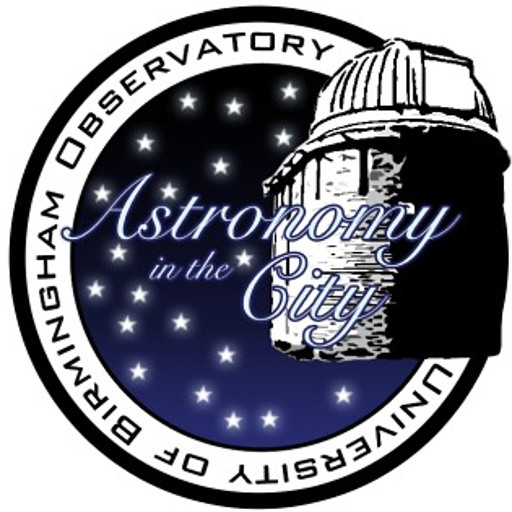
Astronomy in the City is a series of free all-ticket public events, each packed with astrophysics; stargazing, and tea and biscuits. Evenings begin with talks covering astronomical highlights and recent research, and a question-and-answer session (for everything from beginner's questions about the night sky to the latest work done here in Birmingham). Afterwards, (if the weather cooperates) we have observing with telescopes on campus.
Our next Astronomy in the City event of the season will take place on Wednesday January 29th 2020, 5:45 pm-10 pm. University of Birmingham Lecturer Dr Davide Gerosa will discuss his work in a talk titled: "Somewhere in between astronomy and relativity". He will discuss how, until recently, everything we know about the Universe (planets, stars, galaxies...) came to us through light. Straddling the boundaries between astronomy and relativity, gravitational waves provide a fundamentally new way of exploring the cosmos. Why would we only look at the Universe when we can also hear it?
Tickets are available from https://astrointhecity290120.eventbrite.co.uk
The first talk begins at 6:15 pm, in the Large Lecture Theatre of the Poynting Physics Building on the University's Edgbaston campus. Visits from school or other groups are welcome, please get in touch if you have questions.
A further event is planned for 4 March 2020.
More details are on our website
News 04/12/2020
Keep track of gravitational wave alerts
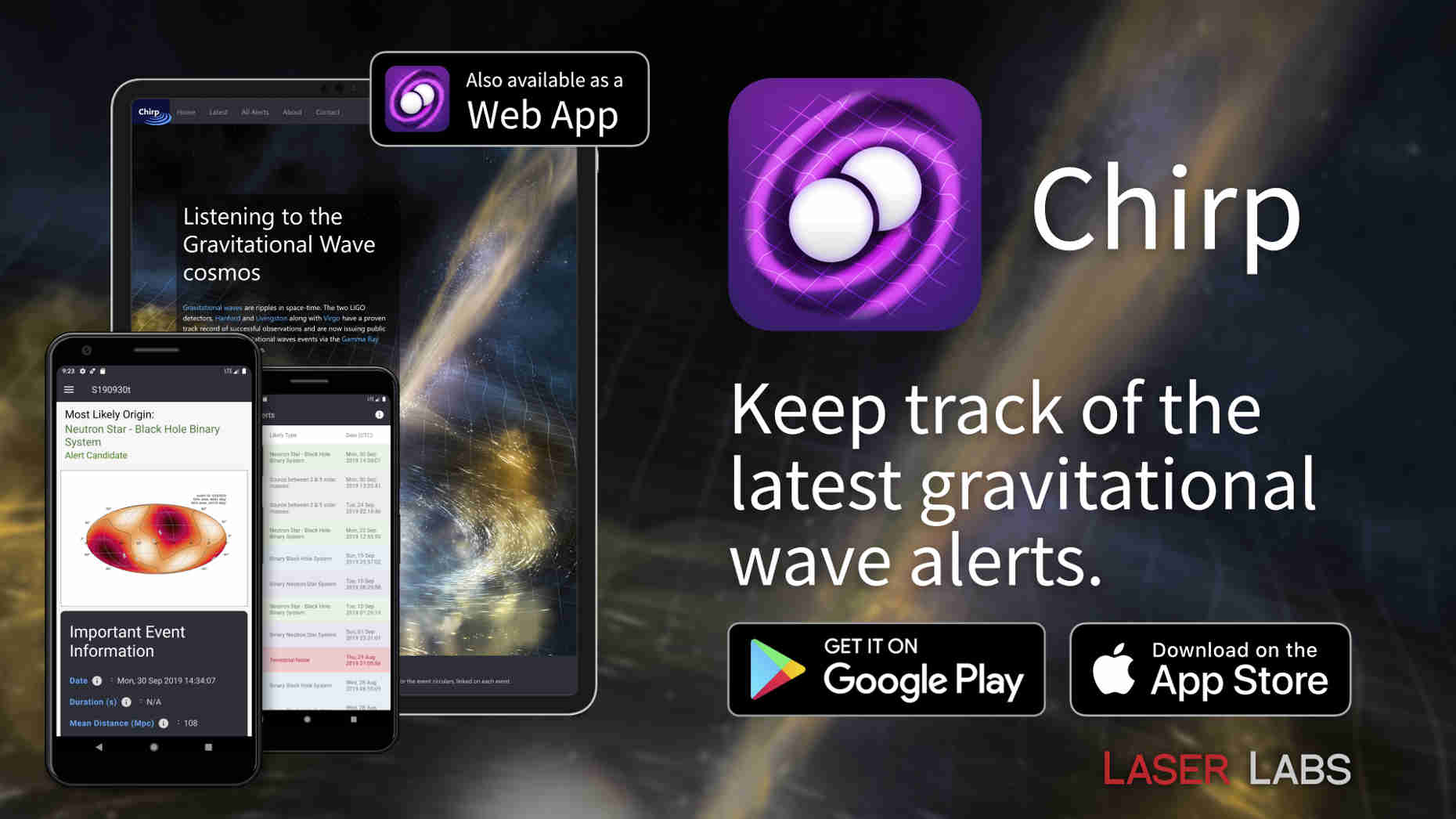
PhD students from the Institute for Gravitational Wave Astronomy have released a new app to encourage members of the public to stay up to date with new gravitational wave events in near real time.
Chirp, designed for use on mobile phones, displays the latest alerts from Laser Interferometer Gravitational-Wave Observatory/Virgo about a possible new gravitational wave. For every new and previous alert you can look up preliminary information about the source of the event, for example whether the signal indicates a black hole collision, or merging neutron stars.
These detections are made by an international team of scientists, including those from the University of Birmingham using the two LIGO detectors in the USA and the VIRGO detector in Italy. The LIGO detectors are the same detectors that won the Nobel prize for Physics in 2017. Along with VIRGO they made a direct observation of a neutron star collision through gravitational waves which started the era of multi-messenger astronomy.
With the start of the third observing run, these gravitational wave events are being released for the first time on public alerts allowing anyone to join us on our journey to discover more about the universe.
Then Postgraduate student, now research fellow Sam Cooper explained his idea for making the app.
"I'd long wanted a way to showcase to my young cousins what I was researching at university and why I couldn't play more Mario Kart with them during the week! I wanted to display the event information in a clear and understandable way, which is the driving focus of Chirp."
Gravitational waves are generated by some of the most catastrophic, violent events occurring in the Universe, such as the collision of black holes and neutron stars. The gravitational waves detected on 14 September 2015 originated from two black holes, each around 30 times the mass of our Sun and located more than a billion light years from Earth, merging to form a single, more massive black hole. The discovery confirms one of the major predications of Albert Einstein's 1915 theory of general relativity.
Aaron Jones another PhD student added:
"I develop new technology for the Gravitational Wave detectors here in Birmingham. Observing run 3 was particularly exciting as we have improved the detection sensitivity. I was excited to develop this with Sam because at a glance I can now see a quick overview of the detection candidates and their probable origins."
Sam Morrell another PhD student at the University of Exeter added: "I have been intrigued for a long time about the potential promise that modern technologies have for tapping into the public enthusiasm for cutting edge science. So when Sam discussed with me his vision for Chirp - to make an easily accessible resource to enable everyone to follow gravitational wave alerts - I was excited to help out."
The app can be downloaded for iOS and Android . Both these links are combined on the apps landing page
News 29/10/2019
PhD Applications open !

The Astrophysics and Space Research Group and the Institute for Gravitational Wave Astronomy invites applications for PhD positions starting in September 2020. We offer cutting-edge research on a variety of different topics in a vibrant environment in the heart of the Midlands! Full details, including links to the online application form are available at http://www.sr.bham.ac.uk/phd/index.php. The application deadline is December 31, 2019. We are looking forward to your applications!
News 08/10/2019
Astronomy in the City
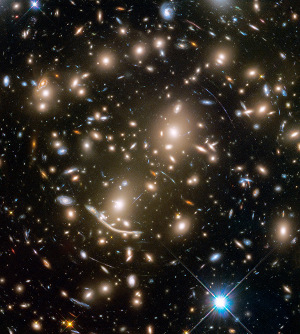
We are delighted to announce the 2019/2020 Astronomy in the City season!
Astronomy in the City is a series of free all-ticket public events, each packed with astrophysics; stargazing, and tea and biscuits. Evenings begin with talks covering astronomical highlights and recent research, and a question-and-answer session (for everything from beginner's questions about the night sky to the latest work done here in Birmingham). Afterwards, (if the weather cooperates) we have observing with telescopes on campus.
Our first Astronomy in the City event of the season will take place on Wednesday 23rd of October. University of Birmingham researcher Dr Matteo Bianconi will discuss the most massive systems in the Universe: galaxy clusters. Hosting thousands of galaxies, these giants are formed through some of the most energetic phenomena to occur since Big Bang. Their complexity allows scientists to study many physical processes, including shedding light on the elusive Dark Matter. By following the development of telescopes and observations, Dr Bianconi will explore the progress of galaxy cluster science in a talk titled "Galaxy clusters: the Universe's biggest laboratories" .
Tickets are available from https://astrointhecity102319.eventbrite.co.uk
The first talk begins at 6:15 pm, in the Large Lecture Theatre of the Poynting Physics Building on the University's Edgbaston campus. Visits from school or other groups are welcome, please get in touch if you have questions.
This will be the first Astronomy in the City event of the 2019/2020 season. Further events are planned for 20 November 2019, 29 January 2020 and 4 March 2020.
More details are on our website
News 04/07/2019
Scientists weigh the balance of matter in galaxy clusters
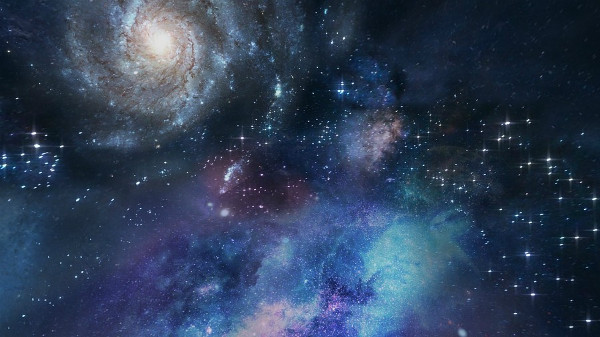
A method of weighing the quantities of matter in galaxy clusters - the largest objects in our universe - has shown a balance between the amounts of hot gas, stars and other materials.
The results are the first to use observational data to measure this balance, which was theorized 20 years ago, and will yield fresh insight into the relationship between ordinary matter that emits light and dark matter, and about how our universe is expanding.
Galaxy clusters are the largest objects in the universe, each composed of around 1,000 massive galaxies. They contain vast amounts of dark matter, along with hot gas and cooler "ordinary matter", such as stars and cooler gas.
In a new study, published in Nature Communications, an international team led by astrophysicists from the University of Michigan in the US and the University of Birmingham in the UK used data from the Local Cluster Substructure Survey (LoCuSS) to measure the connections between the three main mass components that comprise galaxy clusters - dark matter, hot gas, and stars.
Members of the research team had spent 12 years gathering data, which span a factor of 10 million in wavelength, using the Chandra and XMM-Newton satellites, the ROSAT All-sky survey, Subaru telescope, United Kingdom Infrared Telescope (UKIRT), Mayall telecope, the Sunyaev Zeldovich Array, and the Planck satellite. Using sophisticated statistical models and algorithms built by Dr Arya Farahi during his doctoral studies at the University of Michigan the team was able to conclude that the sum of gas and stars across the clusters that they studied is a nearly fixed fraction of the dark matter mass. This means that as stars form, the amount of hot gas available will decrease proportionally.
"This validates the predictions of the prevailing cold dark matter theory. Everything is consistent with our current understanding of the universe," said Dr Farahi, currently a McWilliams Postdoctoral Fellow in the Department of Physics at Carnegie Mellon University.
Dr Graham Smith of the School of Physics and Astronomy at the University of Birmingham and Principal Investigator of LoCuSS, says: "A certain amount of material within the universe collapses to form galaxy clusters.
"But once they are formed, these clusters are 'closed boxes'. The hot gas has either formed stars, or still remains as gas, but the overall quantity remains constant."
"This research is powered by more than a decade of telescope investments," adds Professor August E. Evrard, of the University of Michigan. "Using this high quality data, we were able to characterise 41 nearby galaxy clusters and find a special relationship, specifically anti-correlated behaviour between the mass in stars and the mass in hot gas. This is significant because these two measurements together give us the best indication of the total system mass."
The findings will be crucial to astronomers' efforts to measure the properties of the universe as a whole. By gaining a better understanding of the internal physics of galaxy clusters, researchers will be able to better understand the behaviour of dark energy and the processes behind the expansion of the universe.
"Galaxy clusters are intrinsically fascinating, but in many ways still mysterious objects," adds Dr Smith. "Unpicking the complex astrophysics governing these objects will open many doors onto a broader understanding of the universe. Essentially, if we want to be able to claim that we understand how the universe works, we need to understand galaxy clusters."
Data of the kind studied by the team will grow by several orders of magnitude over the coming decades thanks to next-generation telescopes such as the Large Synoptic Survey Telescope (LSST) which is currently under construction in Chile, and e-ROSITA, a new x-ray satellite. Both will begin observations in the early 2020s.
"These measurements are laying a foundation for precise science with clusters of galaxies," says Professor Alexis Finoguenov, a member of the team based at the University of Helsinki.
News 08/05/2019
UK astrophysicists investigate two new neutron star smash-ups

UK astrophysicists are celebrating the new detection of a series of gravitational wave signals - one of which seems likely to have been caused by the crashing together of two neutron stars, and another that could be the first evidence of the collision of a neutron star and a black hole.
Researchers from the Universities of Birmingham, Cardiff and Glasgow are key partners in the international scientific collaboration led by the National Science Foundation's Laser Interferometer Gravitational-Wave Observatory (LIGO), based in the United States, and Virgo, based in Italy. The new detections were made during its latest run, which commenced on 1 April 2019.
Professor Alberto Vecchio, Director of the Institute of Gravitational Wave Astronomy, University of Birmingham, said: "LIGO-Virgo have gone off a flying start in the new observing run. We are busy following up several gravitational-wave detection candidates from binary systems of black holes and neutron stars. If the instruments continue to perform as they've done so far, it's going to be many sleepless nights of hard work to tease out from the data the full richness of information from these intriguing cosmic collisions."
On April 25, 2019, the detectors registered gravitational waves from what appears likely to be a collision between two neutron stars-the dense remnants of massive exploded stars - which occurred about 500 million light-years from Earth.
One day later, on April 26, the LIGO-Virgo network spotted another candidate source from an event about 1.2 billion light-years away. While the signal was weak and thus requires further investigation, initial analysis of the signal suggests one possibility is that it could have been caused by an event which has never been witnessed before: the collision of a neutron star and black hole.
The new results join the growing list of possible gravitational-wave detections since LIGO and Virgo resumed operations last month.
Professor Andreas Freise, Deputy Director, Institute of Gravitational Wave Astronomy, University of Birmingham said: "What a fantastic start! We had anticipated that LIGO and Virgo would observe many new signals during this observation run. It is very exciting to see nature providing us with several new signals in the first month already, fulfilling our earlier predictions."
The twin detectors of LIGO-one in Washington and one in Louisiana-along with Virgo, located at the European Gravitational Observatory (EGO) in Italy, resumed operations April 1, after undergoing a series of upgrades to increase their sensitivities to gravitational waves-ripples in space and time. Each detector now surveys larger volumes of the universe than before, searching for extreme events such as smash-ups between black holes and neutron stars.
"The latest LIGO-Virgo observing run is proving to be the most exciting one so far," says David H. Reitze of Caltech, Executive Director of LIGO. "We're already seeing hints of the first observation of a black hole swallowing a neutron star. If it holds up, this would be a trifecta for LIGO and Virgo-in three years, we'll have observed every type of black hole and neutron star collision. But we've learned that claims of detections require a tremendous amount of painstaking work-checking and rechecking-so we'll have to see where the data takes us."
News 21/01/2019
Astronomy in the City

We invite you to attend our programme of free public events, Astronomy in the City. Join us for stargazing, observing with portable telescopes, Observatory visits to use our half metre telescope, talks from our experts about cutting edge astronomy research, and your chance to ask them anything about astronomy!
Astronomy in the City events are strictly all ticket, and begin in the Poynting Building on our Edgbaston campus, within easy reach of local transport links.
Please note that due to restricted space, only a limited number of visitors are able to visit the Observatory at each event. Upcoming Events
Our next Astronomy in the City event is Wednesday January 23rd 2019, 5:45-10 pm. Booking essential!
Each Astronomy in the City event will feature a talk on a different astrophysical topic connected to the research done at the University of Birmingham.
2019 Events
- Wednesday 23 January 2019
- Wednesday 6 March 2019
Please join our mailing list to keep up to date. Astronomy in the City is aimed at secondary school age and above (Year 7+). Younger children are welcome to attend the talks/observing on campus, but for safety reasons are not allowed to visit the Observatory. All under-18s must be accompanied by an adult.
News 03/12/2018
A Universe full of black holes
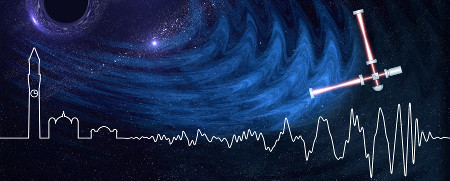
Researchers from the LIGO and Virgo Collaborations have announced gravitational wave observations of four new binary black holes and released their first catalogue of gravitational wave events.
Since the detectors first started operation in September 2015, the LIGO and Virgo Collaborations, which include researchers from the University of Birmingham, have completed two observation runs. During these they have detected gravitational waves from a total of ten stellar-mass binary black hole mergers - compact objects likely formed by the gravitational collapse of massive stars. They have also detected one binary neutron star coalescence - generated by two neutron stars spiraling into each other.
During the second observation run, four new gravitational wave events were discovered, all generated by the merging of binary black holes: GW170729, GW170809, GW170818 and GW170823. GW170729, detected on July 29th 2017, is the most massive and distant gravitational wave source ever observed. In the coalescence, that happened almost 9 billion years ago, an equivalent energy of almost five solar masses has been converted into gravitational radiation.
The scientific papers describing these new findings, which are being initially published on the arXiv repository of electronic preprints, present detailed information in the form of a catalog of all the gravitational wave detections.
The detections were made by the global network formed by the LIGO observatories located in Livingston, Louisiana, and Hanford, Washington, USA, and the Virgo interferometer near Pisa, Italy.
The University of Birmingham has been involved in the Advanced LIGO project since its inception. Members of the Institute for Gravitational Wave Astronomy have developed and built components for the LIGO instruments, such as the high-performance sensors and control electronics for the suspension systems. Birmingham physicists have contributed to the commissioning of the instruments leading to the performance that has enabled these remarkable observations.
Birmingham's scientists have also developed the techniques essential to tease out the signatures of gravitational waves from the data and extensively contributed to the analysis of the data collected during the science runs that have led to the observation of these 11 binary systems. Birmingham's researchers have pioneered the framework and analysis algorithms that are at the heart of the study of the physics of compact binary systems, their astrophysical evolution and tests of Einstein's theory with gravitational-wave observatories. Professor Alberto Vecchio, from the University of Birmingham's Institute for Gravitational Wave Astronomy, said, "It's a universe full of black holes: they pair up and collide, and they do it very frequently. Advanced LIGO has started to operate as an astronomical observatory providing us with a steady stream of new discoveries. The scene is now set to begin understanding the cosmos' black hole factories. Three years ago only a fool would have thought we would be under a deluge of binary black holes, but now this is an intoxicating reality. And it is just the beginning".
Professor Andreas Freise, from the University of Birmingham's Institute for Gravitational Wave Astronomy, said, "When black holes collide they create vibrations in space and time. Now we know that this happens often: the LIGO detectors regularly detect faint echoes that tell of the last seconds in the life of a pair of black holes. These whispers from dark skies tell us about the size and the location of the dying black holes. We have become gravitational wave astronomers, creating new maps of the Universe."
Riccardo Busciccchio, a Birmingham PhD student and member of the LIGO team, said, "We have a graveyard of 10 binary black holes that tells us a lot about their extreme violent last fractions of a second of life, and carry at the same time the signatures of their entire life both as individuals and as binary companions. As a PhD student, it has been a unique opportunity to have access to observations that are still so rare, and to study their characteristics as part of a clearly large population. You get so much enthusiasm from learning a lot to being able to participate actively in the production of scientific results of such great relevance."
Dr Patricia Schmidt, a member of the Virgo Team who will be joining Birmingham's Physics faculty in January 2019, said, "With almost a dozen confident gravitational-wave detections, we have truly established the field of gravitational-wave astronomy. The third observing run is on our doorstep. With an unprecedented number of gravitational-wave observations anticipated, the scientific prospects are enticing."
News 27/11/2018
Postdoctoral Prize Fellowhips in Gravitational-Wave Astronomy
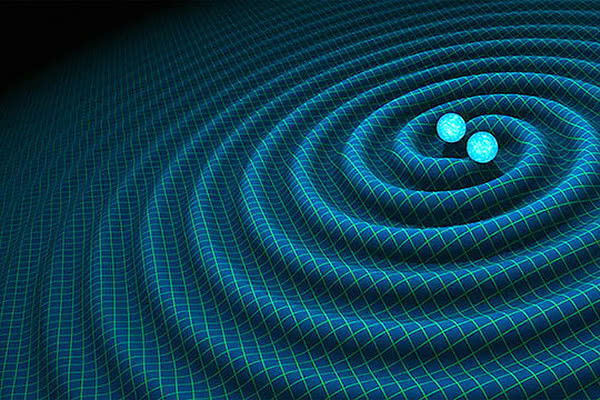
The Institute for Gravitational Wave Astronomy at the University of Birmingham, UK, invites applications for Postdoctoral Prize Fellowships.
The Institute's Postdoctoral Prize Fellowships provide top-calibre researchers with an opportunity to carry out an independent research programme in any area related to gravitational-wave astronomy in a diverse, dynamic and collaborative group. The Institute's research activities cover experimental and theoretical physics with applications to present and future-generation detectors; gravitational-wave observations and transient astronomy; theoretical astrophysics and general relativity. Faculty members include Andreas Freise, Davide Gerosa (from March 2019), Denis Martynov, Haixing Miao, Christopher Moore (from January 2019), Conor Mow-Lowry, Matt Nicholl (from October 2019), Alberto Sesana, Patricia Schmidt (from January 2019) , Silvia Toonen (from March 2019), and Alberto Vecchio.
Applications from top researchers in all areas related to gravitational-wave astronomy, including instrumentation, quantum measurement, data analysis, astrostatistics, transient astronomy, astrophysics theory and general relativity are encouraged. Applications from Ph.D. holders with strong interdisciplinary connections (e.g., to optics, computer science, theoretical physics) or those with backgrounds in adjoint fields are welcome.
The appointment will be for a three-year term starting in 2019. The Prize Fellowship comes with a generous research and travel budget.
Applications should be submitted online via the following URL (job reference number 80380): [https://www.birmingham.ac.uk/staff/jobs/index.aspx]
Applications should include a CV, a two-page statement of research interests and plans, and a list of publications. Complete applications should be received by 17 December 2018 for full consideration
Applicants should also arrange for 3 reference letters to be sent by 17 December 2018 to Ms Joanne Cox at: J.S.Cox[at]bham.ac.uk x
For further information and informal enquiries please contact
Prof Andreas Freise (adf[at]star.sr.bham.ac.uk) or
Prof Alberto Vecchio (av[at]star.sr.bham.ac.uk).
News 09/11/2018
Astronomy in the City

We invite you to attend our programme of free public events, Astronomy in the City. Join us for stargazing, observing with portable telescopes, Observatory visits to use our half metre telescope, talks from our experts about cutting edge astronomy research, and your chance to ask them anything about astronomy!
Astronomy in the City events are strictly all ticket, and begin in the Poynting Building on our Edgbaston campus, within easy reach of local transport links.
Please note that due to restricted space, only a limited number of visitors are able to visit the Observatory at each event. Upcoming Events
Our next Astronomy in the City event is Wednesday November 21st 2018, 5:45-10 pm. Booking essential!
Each Astronomy in the City event will feature a talk on a different astrophysical topic connected to the research done at the University of Birmingham.
2018/2019 Events
- Wednesday 21 November 2018
- Wednesday 23 January 2019
- Wednesday 6 March 2019
Please join our mailing list to keep up to date.
November Programme
- 6:05 pm Doors open
- 6:10 pm Observatory ballot closes
- 6:15 pm Welcome to the University of Birmingham Observatory
- 6:20 pm Exploring the Night Sky in December-January
- 6:35 pm Science talk
- 6:55 pm Ask our Experts your Astronomical Questions
- 7:15 pm Refreshments
- 7:30 pm Observing
Astronomy in the City is aimed at secondary school age and above (Year 7+). Younger children are welcome to attend the talks/observing on campus, but for safety reasons are not allowed to visit the Observatory. All under-18s must be accompanied by an adult.
News 05/10/2018
Astronomy in the City

We invite you to attend our programme of free public events, Astronomy in the City. Join us for stargazing, observing with portable telescopes, Observatory visits to use our half metre telescope, talks from our experts about cutting edge astronomy research, and your chance to ask them anything about astronomy!
Astronomy in the City events are strictly all ticket, and begin in the Poynting Building on our Edgbaston campus, within easy reach of local transport links.
Please note that due to restricted space, only a limited number of visitors are able to visit the Observatory at each event. Upcoming Events
Our next Astronomy in the City event is Wednesday October 17th 2018, 5:45-10 pm. Booking essential!
Each Astronomy in the City event will feature a talk on a different astrophysical topic connected to the research done at the University of Birmingham. This month, Dr. Dorottya Szécsi will discuss stars: how big they are, and how we can measure them.
2018/2019 Events
- Wednesday 17 October 2018
- Wednesday 21 November 2018
- Wednesday 23 January 2019
- Wednesday 6 March 2019
Please join our mailing list to keep up to date.
October Programme
- 6:05 pm Doors open
- 6:10 pm Observatory ballot closes
- 6:15 pm Welcome to the University of Birmingham Observatory
- 6:20 pm Exploring the Night Sky in November-December
- 6:35 pm How big are stars?
- 6:55 pm Ask our Experts your Astronomical Questions
- 7:15 pm Refreshments
- 7:30 pm Observing
Astronomy in the City is aimed at secondary school age and above (Year 7+). Younger children are welcome to attend the talks/observing on campus, but for safety reasons are not allowed to visit the Observatory. All under-18s must be accompanied by an adult.
News 09/04/2018
IOP Astroparticle Physics Early Career Prize
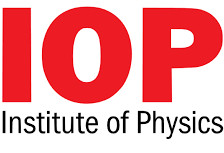
Congratulations to Christopher Berry who won the IOP Astroparticle Physics Early Career Prize for his contributions to understanding the first gravitational-wave observations of binary black holes.
News 19/02/2018
Faculty search in Gravitational-Wave Astronomy

The School of Physics and Astronomy and Institute of Gravitational Wave Astronomy at the University of Birmingham invite applications for multiple permanent faculty openings in gravitational-wave astronomy at the Lecturer / Senior Lecturer level.
Applications from top researchers in all areas related to gravitational-wave astronomy, including instrumentation, quantum measurement, data analysis, astrostatistics, astronomical observations, astrophysics theory and general relativity are encouraged.
Full details can be found at: http://www.birmingham.ac.uk/staff/jobs/index.aspx . Use post number 58513 to search current vacancies.
Candidates should apply online at the link above and arrange for three letters of reference to be sent by the closing date to:
Mrs Joanne Cox School of Physics and Astronomy University of Birmingham Edgbaston B15 2TT United Kingdom E-mail: j.s.cox [at] bham.ac.uk
For further information and informal enquiries please contact: Prof Alberto Vecchio (av [at] star.sr.bham.ac.uk).
The deadline for the application, including reference letters, is 15 March, 2018
News 27/11/2017
Postdoctoral Prize Fellowships 2018
The Institute of Gravitational Wave Astronomy at the University of Birmingham, UK, invites applications for Postdoctoral Prize Fellowships.

The Institute's Postdoctoral Prize Fellowships provide top-calibre researchers with an opportunity to carry out an independent research program in any area connected to gravitational wave astronomy in a diverse, dynamic and collaborative group. Areas of particular strength in the group include experimental and theoretical physics with applications to future-generation detector design; data analysis for ground-based, space-borne, and pulsar-timing observatories; and theoretical astrophysics with a focus on gravitational-wave sources at all mass scales.
Applications from top researchers in all areas related to gravitational-wave astronomy, including instrumentation, quantum measurement, data analysis, astrostatistics, astronomical observations, astrophysics theory and general relativity are encouraged. Applications from Ph.D. holders with strong interdisciplinary connections (e.g., to optics, computer science, theoretical physics) or those with backgrounds in adjoint fields are welcome.
The appointment will be for a three-year term starting in 2018. The Prize Fellowship comes with a generous research and travel budget. The initial annual salary is in the range £29,301 to £38,183.
The deadline for the application, including reference letters, is 5 January, 2018
For full consideration, candidates must apply online at: http://www.birmingham.ac.uk/staff/jobs/index.aspx (job reference 58387) and arrange for three letters of reference to be sent by the closing date to:
Ms Joanne Cox School of Physics and Astronomy University of Birmingham Edgbaston B15 2TT United Kingdom E-mail: j.s.cox [at] bham.ac.uk
For informal enquiries please contact: Prof. Alberto Vecchio (av [at] star.sr.bham.ac.uk), Prof. Andreas Freise (a.freise [at] bham.ac.uk), or Prof. Ilya Mandel (imandel [at] star.sr.bham.ac.uk).
Title: University of Birmingham Professorial Fellows
The University of Birmingham is looking to expand its academic excellence through a number of high profile appointments across all of the academic Colleges, targeting talented academics with an international research reputation and on a steeply rising trajectory towards leadership of their field(s).
The deadline for application is 17 December 2017.
Candidates must apply online at: http://www.birmingham.ac.uk/staff/jobs/index.aspx (job reference 57568)
Title: University of Birmingham Interdisciplinary Professorial Fellows
The University of Birmingham is seeking to appoint a number of highly qualified and experienced Interdisciplinary Chairs. As an integral aspect of the appointment process, aspiring Interdisciplinary Chairs are invited to specify the fields and intellectual focus of their Chair. The research and research programme that is proposed must be interdisciplinary, and the Chair would be held in two (or more) schools.
The deadline for application is 17 December 2017.
Candidates must apply online at: http://www.birmingham.ac.uk/staff/jobs/index.aspx (job reference 57493)
News 20/11/2017
Astronomy in the City

Join us for another instalment of the popular Astronomy in the City. Learn about astrophysics and astronomy with talks on this month's night sky and current research, a question and answer session with our friendly expert panel, and the chance to observe (weather permitting) with the Astronomy Society's portable telescopes and the University's historic Grubb telescope. A lucky few will have the opportunity to visit the University's Observatory and see its half-metre telescope too.
Each Astronomy in the City event will feature a talk on a different astrophysical topic connected to the research done at the University of Birmingham. This month Callum Bellhouse will tell us about his work at observatories in Chile.
Cost: Free (but booking is essential)
Location: Large Lecture Theatre, Poynting Building. R13 on campus map
Schedule:- 17:30 - Doors open
- 17:55 - Observatory ballot closes
- 18:00 - Welcome to the University of Birmingham Observatory
- 18:05 - Exploring the Night Sky
- 18:20 - The Biggest Telescopes and the Fastest Galaxies
- 18:40 - Ask-the-expert
- 19:00 - Break for refreshments
- 19:15 - Observing
All levels of astronomical knowledge (of lack thereof) are welcome; the event is aimed at secondary school age and above (year 7+). Younger children are welcome to attend the activities on campus, but for safety reasons are not allowed to visit the Observatory. All under-18s must be accompanied by an adult.
Due to limited space at the Observatory, we can only accommodate a maximum of 24-30 visitors on the night; we will be running a lottery to allocate spaces. Each trip lasts about 1.5 hours and the last trip will return about 22:00.
News 24/10/2017
New Results on the the Rapidly Rotating Massive Supergiant Star Zeta Puppis
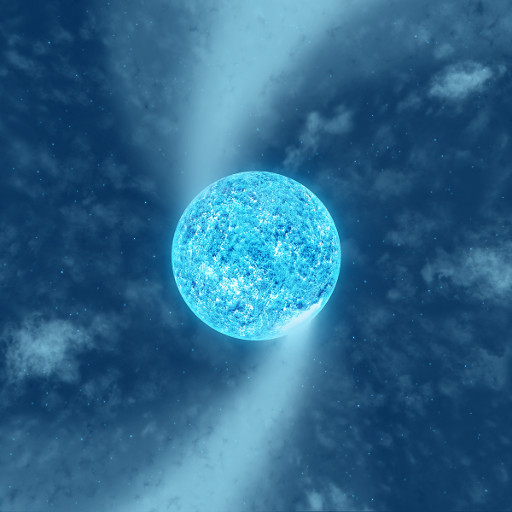
An international team of astronomers have discovered evidence of how surface features of the hot massive supergiant star Zeta Puppis induce the formation of fundamental structures in its massive stellar wind.
In contrast to cool stars (like the Sun), hot massive stars are scarce and possess extremely strong winds, and catastrophically end their lives as supernovae that stir up and enrich the interstellar medium with chemical elements involved in the creation of new stars and even planets like Earth.
This new research breakthrough on the hot massive supergiant star Zeta Puppis is a significant step towards a better understanding of the true nature of hot massive stars which play a crucial role in the evolution of the Universe.
The team used a network of tiny orbiting nanosatellites of the BRIght Target Explorer (BRITE) space mission to monitor the visible brightness changes coming from the surface of Zeta Puppis over about six months, and simultaneously monitored the behavior of the wind of the star from several ground-based professional and amateur observatories.
The observations, published in Monthly Notices of the Royal Astronomical Society, revealed a 1.78-day periodicity both at the surface and in the wind of Zeta Puppis. This signal turns out to be due to the spinning of the star, which are driving large-scale spiral-like structures dubbed corotating interaction regions (CIRs) in its wind. The surface of the star is moving incredibly fast - around 540 kilometers per second, around 50 times faster than speeding bullet.
Tahina Ramiaramanantsoa, PhD student at the University of Montreal, Canada, who led the investigation, said, "Once we found that the variations in the brightness of Zeta Pup arise because bright spots on its surface are carried into and out of our view by the star's rotation every 1.78 days, we employed an algorithm that used those brightness variations to make maps showing where the bright spots are on the star's surface and how they change over time. Then by studying the light emitted at a specific wavelength by ionized helium from the stars wind, we clearly saw some patterns that are caused by arms of CIRs induced in the wind by the bright surface spots."
The 1.78 day periodicity was initially discovered in 2014 using an instrument called SMEI (Solar Mass Ejection Imager), designed and built at the University of Birmingham. However, at that point the origin on the period was unclear. The new data from the BRITE nanosatellites has enabled this mystery to be solved.
The southern naked-eye bright star Zeta Puppis is an evolved massive star currently at the stage of supergiant. It is often considered as the archetype of hot massive stars with strong stellar winds. Indeed, about sixty times more massive and seven times hotter than the Sun, Zeta Puppis has a stellar wind about a billion times stronger than that of the Sun. In that sense, the solar wind that drives aurorae and shapes the tails of comets appears like a light breeze when compared to the gale-force wind from Zeta Puppis.
Dr Ian Stevens, from the School of Physics and Astronomy at the University of Birmingham, said, "Zeta Puppis will become either a black hole or a neutron star at the end of its life. In that regard, it is interesting to realise that, if Zeta Pup had survived its past interactions within a massive binary system, it would have been a perfect candidate for the generation of a gravitational-wave signals from the coalescence of a pair involving any combination of stellar-mass black holes or neutron stars in the future.
News 17/10/2017
First direct observation of colliding neutron stars
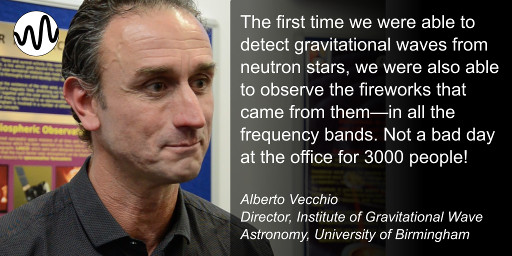
For the first time, scientists have directly detected gravitational waves -- ripples in space and time -- in addition to light from the spectacular collision of two neutron stars. This is the first time that astronomers have been able to study the same event with both gravitational waves and light.
The discovery was made using the U.S.-based Laser Interferometer Gravitational-Wave Observatory (LIGO); the Europe-based Virgo detector, and some 70 ground- and space-based observatories. This breakthrough is the result of 40 years of work, and marks the beginning of a truly new era in observational astronomy.
At 13:41:04 BST on August 17, 2017 the Advanced LIGO and Advanced Virgo detectors recorded the gravitational-wave signal (GW170817) from a binary neutron star coalescence. Two seconds later, NASA's Fermi Gamma-ray Burst Monitor independently detected a short burst of gamma-rays (GRB170817A).
Scientists from the University of Birmingham's Institute of Gravitational Wave Astronomy, who have worked on the Advanced LIGO project since its inception, have been celebrating the announcement.
Professor Alberto Vecchio said, "Neutron stars are quite remarkable objects: one and a half times the mass of the Sun, primarily in the form of neutrons is packed in a region of the size of Birmingham. I still find it hard to believe that we could observe, almost in real time, the final two minutes of life of a binary composed by two such bodies that eventually collided travelling at a third of the speed of light."
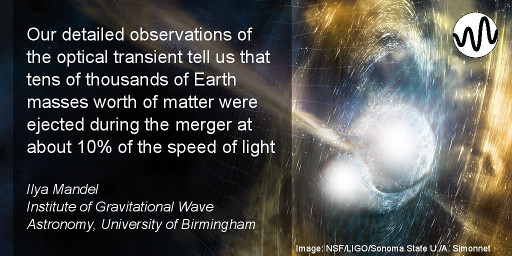
Professor Andreas Freise said, "The LIGO gravitational wave observatories have once again achieved a spectacular discovery. With precision laser interferometers that push boundaries of science and technology we record the faintest vibrations in the fabric of space and time. Detecting for the first time ever the signal of two neutron stars merging has been immensely exiting. We have just seen a glimpse of what gravitational wave detectors can reveal. I am looking forward to exciting times in astronomy."
From the gravitational-wave signal, the neutron star binary was initially localised to a sky region of approximately 30 square degrees (about 150 times the size of the full moon) at a distance of roughly 40 Mpc (130 million light-years). The precise localisation and the short distance (cosmologically speaking) made it the perfect target for follow-up observations with optical telescopes.
These joint observations confirm the hypothesis that colliding neutron stars are the engine of at least some short bursts of gamma rays, and are the likely source of rare heavier elements, such as gold and platinum, which cannot be made by regular stars.
The combination of optical and gravitational-wave observations enable new science, such as measuring the Hubble parameter, which describes the expansion of the Universe.
This is only the beginning for astronomy with both gravitational waves and light. Physicists at the University of Birmingham are already looking forward to a new generation of gravitational-wave detectors.
News 08/08/2017
Birmingham-Nottingham extragalactic workshop 21st - 22nd September 2017
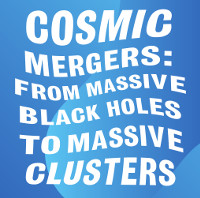
The Birmingham-Nottingham extragalactic workshop series consists of informal 2-day events, involving typically ~50 participants, with the aim of bringing together researchers in related strands of research in a topical and well-focused area of extragalactic astronomy.
This year, the topic of the workshop is Cosmic Mergers from Massive Black Holes to Massive Clusters, and it will be held at the University of Birmingham. We will review recent progress in our understanding of mergers in the extragalactic sky across a wide range of scales, and discuss scientific topics, physical processes, analysis techniques, and challenges of upcoming datasets, of common interest. More information about the scientific motivation can be found here.
For more details see our website
To contact us, please send an email to workshop[at]star.sr.bham.ac.uk.
News 23/03/2017
Lectureship in Gravitational Wave Experiments

The School of Physics and Astronomy and Institute of Gravitational Wave Astronomy at the University of Birmingham invite applications for a permanent faculty position in gravitational-wave instrumentation and experiments at the Lecturer/ Senior Lecturer/ Reader level.
Applications from top researchers in all experimental areas relevant for gravitational-wave astronomy, including quantum optics, interferometry, quantum measurement, metrology and instrumentation are encouraged.
Full details can be found at: http://www.birmingham.ac.uk/staff/jobs/index.aspx Use the post number 56792 to search current vacancies.
For further information and informal enquiries please contact:
Prof Andreas Freise (adf [at] star.sr.bham.ac.uk) or
Prof Alberto Vecchio (av [at] star.sr.bham.ac.uk).
The application deadline is 21 April 2017.
News 16/03/2017
LIGO Magazine

The US-based Laser Interferometer Gravitational-Wave Observatory (LIGO) is supported by an international group of more than 800 scientists from about 80 institutions, the LIGO Scientific Collaboration LSC. Birmingham is contributing to the development, operation and science exploitation of Advanced LIGO, the most sensitive, kilometer-sized gravitational wave observatory in the world.
Issue 10 of the LIGO Magazine is available now, you can download the magazine (pdf file) at: http://www.ligo.org/magazine/
In this issue we look forward to a 'new season' of gravitational-wave astronomy: continuing the search for new signals with LIGO's second observing run, 'O2'. We begin with an overview of O2 and an interview, 'Getting ready for O2: A data analysis perspective', with gravitational-wave astronomers Sarah Caudill and Vivien Raymond when they were gearing up to begin analyzing the new data.
We hope you find it inspiring and entertaining. Let us know what you think and do tell your friends and colleagues by forwarding this link to them.
News 10/02/2017
Astronomy in the City
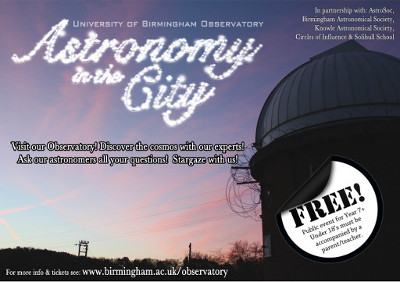
As the evenings are starting to get lighter, we are nearing the end of our season of Astronomy in the City. The final event will be on 8th March, details of the evenings and a link to book tickets are on our website
Alberto Sesana will speak about the Universes biggest black holes and how they evolve with their host galaxies. Please do remember to book tickets to avoid disappointment.
For those who have yet to attend, Astronomy in the City is a series of public events, each packed with astrophysics; stargazing, and tea and biscuits. Evenings begin with talks covering astronomical highlights and recent research, and a question-and-answer session (for everything from beginner's questions about the night sky to the latest work done here in Birmingham). Afterwards, (if the weather cooperates) we have observing with telescopes on campus, and a lucky few will be taken out to the University's Observatory.
The first talk begins at 6:00 pm, in the Large Lecture Theatre of the Poynting Physics Building on the University's Edgbaston campus. Please arrive by 5:55 pm to be entered into the ballot for trips to the Observatory. Visit from school or other groups are welcome, please get in touch if you have questions.
To keep up-to-date with the latest news and events (not just Astronomy in the City), please follow us on Twitter or Facebook. We'd love to see any of your pictures of the night sky too. The Astronomy in the City Team
News 24/11/2016
Postdoctoral Prize fellowships

The Institute of Gravitational Wave Astronomy at the University of Birmingham, UK, invites applications for Postdoctoral Prize Fellowships.
The Institute's Postdoctoral Prize Fellowships provide top-calibre researchers with an opportunity to carry out an independent research program in any area connected to gravitational wave astronomy in a diverse, dynamic and collaborative group. Areas of particular strength in the group include experimental and theoretical physics with applications to future-generation detector design; data analysis for ground-based, space-borne, and pulsar-timing observatories; and theoretical astrophysics with a focus on gravitational-wave sources at all mass scales.
Applications from top researchers in all areas related to gravitational-wave astronomy, including instrumentation, quantum measurement, data analysis, astrostatistics, astronomical observations, astrophysics theory and general relativity are encouraged. Applications from Ph.D. holders with strong interdisciplinary connections (e.g., to optics, computer science, theoretical physics) or those with backgrounds in adjoint fields are welcome.
The appointment will be for a three-year term starting in 2017. The Prize Fellowship comes with a generous research and travel budget. The initial annual salary is in the range £29,301 to £38,183.
For full consideration, candidates must apply online at: http://www.birmingham.ac.uk/staff/jobs/index.aspx (job reference 56253) and arrange for three letters of reference to be sent by the closing date to:
Ms Joanne Cox School of Physics and Astronomy University of Birmingham Edgbaston B15 2TT United Kingdom E-mail: j.s.cox [at] bham.ac.uk
For informal enquiries please contact: Prof. Alberto Vecchio (av [at] star.sr.bham.ac.uk), Prof. Andreas Freise (a.freise [at] bham.ac.uk), or Prof. Ilya Mandel (imandel [at] star.sr.bham.ac.uk).
News 09/11/2016
Astronomy in the City

After a successful first installment of our Astronomy in the City season, we're pleased to announce that the next event will be on Wednesday 23 November. This month, our new Observatory Director, Sean McGee, will speak about his research in his talk Nature vs Nurture: The formation of galaxies. We'll also have our usual talk on the night sky, chance to ask questions, and (weather-dependent) observing. More details are on our site and tickets are available now from here
We would also like to advertise a special event being organised by the students of our AstroSoc: a talk by Prof. Cole Miller, who will be visiting from the University of Maryland, on the Mysteries of Black Holes. This will be on the evening of Thursday 12 January 2017 and (like Astronomy in the City) is free. If you are interested, please register here
For those who have yet to attend, Astronomy in the City is a series of public events, each packed with astrophysics; stargazing, and tea and biscuits. Evenings begin with talks covering astronomical highlights and recent research, and a question-and-answer session (for everything from beginner's questions about the night sky to the latest work done here in Birmingham). Afterwards, (if the weather cooperates) we have observing with telescopes on campus, and a lucky few will be taken out to the University?s Observatory.
Future events are planned for
- Wednesday 23 November 2016
- Wednesday 25 January 2017
- Wednesday 8 March 2017
The first talk begins at 6:00 pm, in the Large Lecture Theatre of the Poynting Physics Building on the University's Edgbaston campus. Please arrive by 5:55 pm to be entered into the ballot for trips to the Observatory. Visit from school or other groups are welcome, please get in touch if you have questions.
News 01/11/2016
Singing binaries: listening to the chirps of black holes
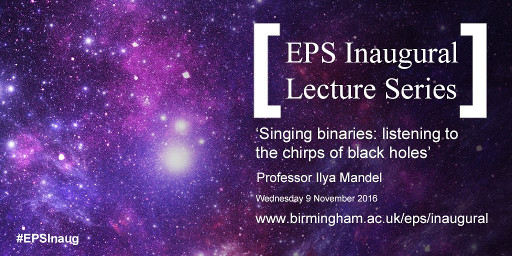
Professor Ilya Mandel, Professor of Theoretical Astrophysics School of Physics and Astronomy, University of Birmingham
Will be giving his inaugural lecture on Wednesday 9 November 2016 starting at 5.15pm in Lecture Theatre 117, Physics West map ref. R8 , followed by a drinks reception in the Physics Library.
If you would like to attend, please visit this web site
In this lecture, Professor Mandel will discuss the detection of gravitational waves and explore the potential research opportunities arising from this revolutionary discovery. On September 14, 2015, the instruments of the Laser Interferometer Gravitational-wave Observatory (LIGO) detected a disturbance. This tiny signal was the echo of a very loud song, sung by a pair of black holes merging more than a billion years ago during the last fraction of a second of their lives. This discovery heralded the conclusion of a decades-long search for one of the most difficult to test predictions of General Relativity, Einstein's theory of gravity.
At the same time, this black-hole song was the first note of a beautiful symphony to reach us through a newly opened window on the Universe. Through this window of gravitational-wave astronomy, we are already beginning to probe the secrets of strong-field gravity. In the next few years, we anticipate hearing many more songs coming from the mergers of compact remnants of massive stars: neutron stars and black holes. Like palaeontologists who use the skeletons of dinosaurs to discover what living dinosaurs looked like, we are beginning to study the evolutionary history of massive stars by observing their merging remnants.
News 02/09/2016
LIGO Magazine
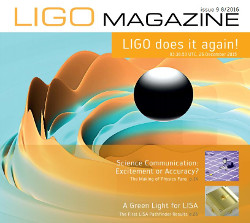
The US-based Laser Interferometer Gravitational-Wave Observatory (LIGO) is supported by an international group of more than 800 scientists from about 80 institutions, the LIGO Scientific Collaboration LSC. Birmingham is contributing to the development, operation and science exploitation of Advanced LIGO, the most sensitive, kilometer-sized gravitational wave observatory in the world.
Issue 9 of the LIGO Magazine is available now, you can download the magazine (pdf file) at: http://www.ligo.org/magazine/
In this issue Simon Stevenson looks at the astrophysical implications of this in 'Astrophysics with gravitational wave observations'. In 'The Making of Physics Fans', Joey Key and Martin Hendry describe the outreach and public engagement work around the detection announcements, and this issue also highlights a few examples of the many ongoing outreach activities, such as the collage of tweets about the detection, in 'The Glasgow Mosaic' by Chris Messenger and with 'Gravitational waves in the Science Museum' by Anna Green.
The main aim of the magazine, however, is not outreach as such but to provide information to the members of our collaboration. We often like to do this in the form of interviews and are pleased to feature two interviews in this issue, one with Stan Whitcomb and another with Peter Michelson.
We hope you find it inspiring and entertaining. Let us know what you think and do tell your friends and colleagues by forwarding this link to them.
News 08/08/2016
Post-doctoral position in experimental Gravitational-Wave research at the University of Birmingham
The gravitational-wave group at the University of Birmingham invites applications for a post-doctoral position in the area of experimental gravitational-wave detection. The project will be to build a new radiation-pressure dominated optical apparatus on the 10cm size scale that is capable of prototyping novel uses of non-linear interaction such as internal squeezing and active filters. The initial aim is to test non-linear interactions with classical fields before moving towards the low-noise quantum-radiation-pressure regime.
The position is available from autumn/winter 2016 for an initial period of two years, with a possible one-year extension. The starting salary is in the £28,982 to £37,768. With potential progression once in post to £40,082 a year. Applicants with a background in gravitational-wave instrumentation, precision interferometry, and/or radiation-pressure opto-mechanics are welcome to apply.
The Birmingham gravitational-wave group has eight academic staff members: Will Farr, Andreas Freise, Ilya Mandel, Haixing Miao, Conor Mow-Lowry, Alberto Sesanna, Alberto Vecchio, and John Veitch. The group has a broad range of research interests including astrophysics, gravitational-wave observations and data analysis, and instrumentation and advanced interferometry.
For full consideration, candidates must apply online at: http://www.birmingham.ac.uk/staff/jobs/index.aspx (use job reference 55612) The official post description can be found at: http://www.download.bham.ac.uk/vacancies/jd/55612.pdf
and arrange for three letters of reference to be sent by the closing date to:
Mrs Joanne Cox School of Physics and Astronomy University of Birmingham Edgbaston B15 2TT United Kingdom E-mail: j.s.cox [at] bham.ac.uk
The deadline for application is Tuesday 30th August 2016.
For further information and informal enquiries please contact: Prof Andreas Freise (adf [at] star.sr.bham.ac.uk) or Dr Conor Mow-Lowry (conor [at] star.sr.bham.ac.uk).
News 03/08/2016
Birmingham's role in gravitational wave detection celebrated in Thinktank exhibit
Thinktank, Birmingham Science Museum is hosting a new exhibit, celebrating the role of Birmingham scientists in detecting gravitational waves, the globally significant finding that will help us to understand and explore the mysteries of our universe.
On 14 September 2015 at 10.50:45 UK time an international team of scientists, including those from the University of Birmingham, detected gravitational waves for the first time, using the twin LIGO instruments in the US.
Visitors will be able to interact with a model of the large gravitational wave detectors, using laser light to reveal tiny vibrations, and learn more about black holes and gravitational waves, through material prepared by students from the University of Birmingham.
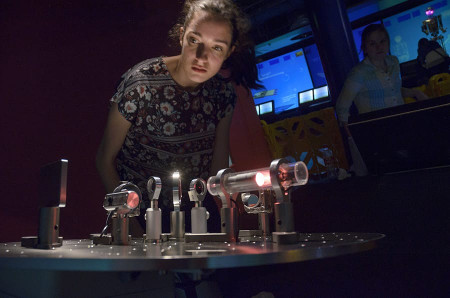
Postgraduate student Hannah Middleton explained, "Birmingham has played a vital role in one of the biggest scientific discoveries of our lifetime! With this exhibit we want to share our excitement and make our work more accessible to the city, and the region."
Gravitational waves are generated by some of the most catastrophic, violent events occurring in the Universe, such as the collision of black holes. The gravitational waves detected on 14 September 2015 originated from two black holes, each around 30 times the mass of our Sun and located more than a billion light years from Earth, merging to form a single, more massive black hole. The discovery confirms one of the major predications of Albert Einstein's 1915 theory of general relativity.
Fellow postgraduate student Sam Cooper added, "The response we've had has been phenomenal. Gravitational waves hold so much information that will teach us about the origins of our Universe. Studying them could give us insight into the evolution of stars, supernovae, gamma-ray bursts, neutron stars and black holes. This is a very exciting time for physicists."
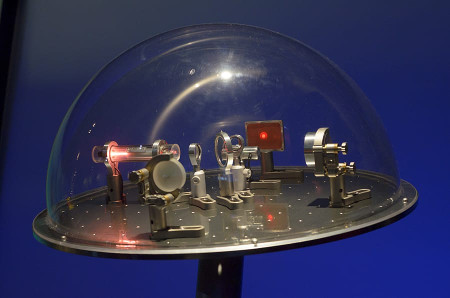
Birmingham physicists built the hardware components now installed in the LIGO instruments, developed one of the main optical simulation tools, FINESSE, and have provided a significant contribution to the analysis of the LIGO data.
On 26 December 2015, LIGO recorded another gravitational wave signal, the second confirmed detection of gravitational waves from merging black holes.
Anna Green, a postgraduate student, said, "The second detection further confirms that we are, undoubtedly, at the dawn of a new era of astronomy. Hopefully this exhibit will inform and excite you, and perhaps even inspire the next generation of physicists and astronomers."
Lisa Stallard, Museum Manager at Thinktank, Birmingham Science Museum, said: "We are delighted to display the gravitational waves exhibit at Thinktank in our Futures gallery, which will feature alongside other key technological developments to help visitors learn more about the exciting discoveries of the University of Birmingham team. "Having the gravitational waves exhibit at Thinktank serves as a reminder of the volume of significant scientific work undertaken within our region, and reflects our commitment to showcasing cutting edge research to as many people as possible.""
News 21/07/2016
Astrophysics PhD graduates

At this year's degree ceremony in the Great Hall on July 11th, two of our talented postgraduate students were awarded their doctorate degrees by the chancellor Lord Bilimoria. Seen here in their Birmingham PhD robes are Dr. Maggie Lieu and Dr. Carl-Johan Haster with postgraduate students from the group. Carl-Johan's thesis was titled "Compact, diverse and efficient: globular cluster binaries and gravitational wave parameter estimation challenges� and can be found here. Carl-Johan is about to take up the position of postdoctoral Fellow at CITA (Canadian Institute of Theoretical Astrophysics),University of Toronto. Maggie's thesis titled "Cosmic Giants on Cosmic Scales can be found here B Maggie is about to take up a position as a Research Fellow at the European Space Agency.
News 10/03/2016
LIGO Magazine
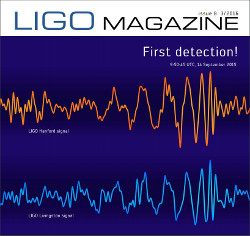
The US-based Laser Interferometer Gravitational-Wave Observatory (LIGO) is supported by an international group of more than 800 scientists from about 80 institutions, the LIGO Scientific Collaboration LSC. Birmingham is contributing to the development, operation and science exploitation of Advanced LIGO, the most sensitive, kilometer-sized gravitational wave observatory in the world.
Issue 8 of the LIGO Magazine is available now. This issue was prepared at the time when the scientific papers on the first detection of gravitational waves were still being written, and when most groups were working hard to prepare new material for the public announcement. We are very grateful to our contributors whose time and effort made it possible to now present some stories and images that you might not have seen before. Our title, the back cover and the several articles in the magazine are all about GW150914. In 'The Transition of Gravitational Physics - From Small to Big Sciencer' we complete Richard Isaacson' story on the origins of LIGO. And while we are celebrating the ground-based detection, in 'LISA Pathfinder: going operational' you can read more about our space adventures.
You can download the magazine (pdf file) at: http://www.ligo.org/magazine/
We hope you find it inspiring and entertaining. Let us know what you think and do tell your friends and colleagues by forwarding this link to them.
News 02/03/2016
Astronomy in the City
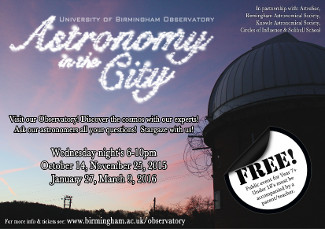
Thank you to everyone who has joined us at Astronomy in the City so far this season. We are delighted to see so many new people joining in, despite the ongoing bad luck with the weather! We appreciate your support.
Tickets have been available for the final event of our 2015/16 season on March 9th for a while now. We encourage you to get your tickets soon, because they always go quickly after we send an email announcement. Full details of the evening and a link to get your tickets are here
On March 9th we will have the fourth of our talks celebrating the 100th anniversary of General Relativity. Dr Graham Smith will speak about the bending of light, Einstein's greatest blunder, cosmic acceleration, and the exciting future of the Large Synoptic Survey Telescope.
Our new entry/ballot policy continues to help us make a prompt 6pm start, so we will continue with it in March. It is repeated here:
* Entry to the ballot for Observatory trips will close at 5:55pm. * Anyone not entered into the ballot by that time will have their * ticket checked manually and then be ushered swiftly into the lecture * theatre. So please try to arrive promptly, and accept our apologies * if you're disappointed not to gain entry to the ballot.
News 12/02/2016
Gravitational Waves

On 14 September 2015 at 10.50:45 UK time, an international team of scientists including the University of Birmingham detected gravitational waves for the first time, using the twin LIGO instruments in Louisiana and Washington state in the US. The detection of these waves will help us to understand and explore the mysteries of our universe.
Confirming Einstein's theory
Gravitational waves are generated by some of the most catastrophic, violent motions occurring in the universe, such as the collision of black holes. The gravitational waves detected on 14 September 2015 originated from two black holes, each around 30 times the mass of our Sun and located more than a billion light years from Earth, merging to form a single, more massive black hole. The discovery confirms one of Albert Einstein�s major predictions in his 1915 general theory of relativity.
Professor Alberto Vecchio, from the University of Birmingham, whose team has developed the techniques to extract the properties of the sources from the gravitational wave signatures, and has provided a significant contribution to the analysis of the LIGO data, said: "This observation is truly incredible science and marks three milestones for physics: the direct detection of gravitational waves, the first observation of a binary black hole, and the most convincing evidence to-date that Nature's black holes are the objects predicted by Einstein's theory."
Gravitational waves carry unique information about the origins of our Universe, and studying them is expected to provide important insights into the evolution of stars, supernovae, gamma-ray bursts, neutron stars and black holes.
When a gravitational wave passes by the detector, it stretches and squeezes space-time by a tiny amount. The Advanced LIGO detectors use incredibly sensitive equipment to detect these ripples, indicating a gravitational wave. Gravitational waves require incredibly sensitive equipment to detect them; they have never been directly observed before, until now. The University of Birmingham has been involved in the Advanced LIGO project since its inception. Birmingham physicists have build hardware components now installed in the LIGO instruments, they developed one of the main optical simulation tools, FINESSE, and contributed significantly to the design and commissioning of modern gravitational wave detectors. The Birmingham group has developed the techniques essential to tease out the signatures of gravitational waves from the data and has provided a major contribution to the analysis of the LIGO data.
A better understanding of our universe
This discovery will open a new door on the cosmos and provides us with a better understanding of our universe, and its most violent manifestations. In the future LIGO may even pick up gravitational waves generated just a fraction of a second after the Big Bang.
Professor Andreas Freise, from the University of Birmingham's School of Physics and Astronomy, said: "It is amazing to think that we have been able to measure the echoes from the birth of a new black hole that happened more than a billion years ago� there was a 'disturbance in the gravitational force', and the LIGO detectors have felt it!"
The next leap
In the near future, the Advanced LIGO detectors will be increased to full power, boosting their sensitivity to gravitational waves, which will allow more distant events to be discovered. With increasingly sensitive instruments and new detectors to be constructed in other locations around the world, this first detection is surely just the beginning. Soon we may discover things we don't even know we don't know yet.
News 15/01/2016
Postdoctoral Research Position

The Astrophysics and Space Research Group at the University of Birmingham invites applications for a postdoctoral position in extragalactic astrophysics. The successful candidate will complement and expand existing research activities within the extragalactic group. Applications are particularly encouraged within the areas of galaxy formation and evolution, gravitational lensing, and the epoch of re-ionization. Observational studies of galaxy evolution at the University of Birmingham focus on the role of environment, and exploit multi-wavelength surveys such as GOGREEN (a Gemini Large spectroscopic survey of high redshift galaxy groups and clusters), GEEC/GEEC2, LoCuSS and XXL. The successful candidate will have an opportunity to make a major contribution to these and other surveys.� Candidates interested in numerical extragalactic astrophysics, and future exploitation of facilities including Euclid and LSST are also encouraged to apply.
Funding for this position is expected to begin on April 1, 2016, with preferred start date as soon as possible after this. The appointment will be made for three years.
Informal enquiries may be addressed to Dr Sean McGee (smcgee[at]star.sr.bham.ac.uk).
Information about the Astrophysics and Space Research Group is available at www.sr.bham.ac.uk
To apply, applicants should send a curriculum vitae, publication list and brief statement of research interests to exgal_postdoc[at]star.sr.bham.ac.uk. In addition, applicants should also arrange to have three letters of recommendation sent to the the same email address (exgal_postdoc[at]star.sr.bham.ac.uk).
The closing date for applications and reference letters is March 1, 2016.
News 04/01/2016
XXL Hunt for Galaxy Clusters
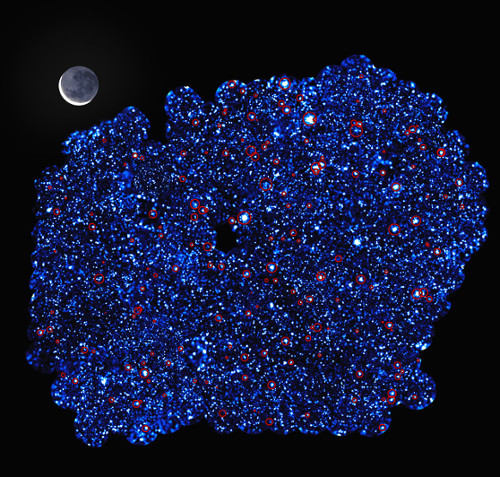
ESO telescopes have provided an international team of astronomers with the gift of the third dimension in a plus-sized hunt for the largest gravitationally bound structures in the Universe - galaxy clusters. Observations by the VLT and the NTT complement those from other observatories across the globe and in space as part of the XXL survey - one of the largest ever such quests for clusters.
Galaxy clusters are massive congregations of galaxies that host huge reservoirs of hot gas - the temperatures are so high that X-rays are produced. These structures are useful to astronomers because their construction is believed to be influenced by the Universe's notoriously strange components - dark matter and dark energy. By studying their properties at different stages in the history of the Universe, galaxy clusters can shed light on the Universe's poorly understood dark side.
The team, consisting of over 100 astronomers from around the world, started a hunt for the cosmic monsters in 2011. Although the high-energy X-ray radiation that reveals their location is absorbed by the Earth's atmosphere, it can be detected by X-ray observatories in space. Thus, they combined an ESA XMM-Newton survey - the largest time allocation ever granted for this orbiting telescope - with observations from ESO and other observatories. The result is a huge and growing collection of data across the electromagnetic spectrum, collectively called the XXL survey.
Birmingham astronomers are responsible for measuring the mass of galaxy clusters discovered in the XXL survey. Their first results are described by Lieu et al. and Ziparo et al. in a special issue of Astronomy & Astrophysics.
News 03/12/2015
Lift-off for LISA Pathfinder
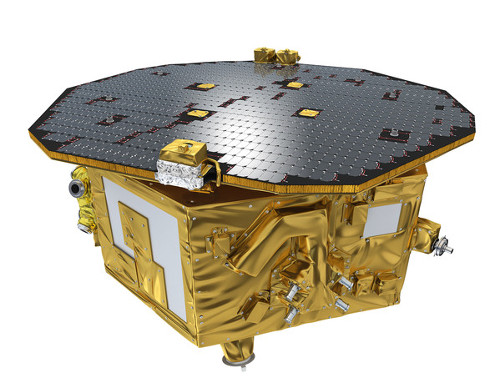
The space mission 'LISA Pathfinder' was launched successfully on December 3rd 2015 from the Kourou spaceport, French Guinea. LISA Pathfinder is a technology demonstrator paving the way for a space-based gravitational wave detector LISA. LISA Pathfinder's mission is to prove that it can shield two free-falling metal cubes from all internal and external forces better than any other spacecraft ever flown. This means flying in space to within an accuracy of a few billionths of a metre (nanometre), and being able to sense the relative positions of the metal cubes to within a trillionth of a metre (picometre) over the bandwidth of interest.
Over the next two weeks, the spacecraft will reach the orbit's highest point in six critical burns. The spacecraft will arrive at its operational orbit, near the L1 Lagrange point, 1.5 million km from Earth in the direction of the Sun, eight weeks after launch. Nominal operations will last six months; an extension of six months is possible.
University of Birmingham physicists were involved in the design and build of the Phasemeter - the electronic system which measures the separation between the two test masses linked by laser beams. For more information, visit the ESA LISA Pathfinder webpage.
News 30/10/2015
Astronomy in the City

We invite you to attend our programme of free public events, "Astronomy in the City". Join us for stargazing, observing with portable telescopes, observatory visits to use our half metre telescope, talks from our experts about cutting edge astronomy research, and your chance to ask them anything about astronomy!
Tickets for our next event on Wednesday November 25th 5:30 pm - 10 pm are available here. Booking is essential!!!
Please note that due to restricted space, only a limited number of visitors are able to visit the Observatory at each event.
This year marks the 100th anniversary of Einstein's general relativity, our best theory of gravity. General relativity is central to much of modern astrophysics (including research we do here), explaining everything from black holes to the expansion of the Universe itself. To celebrate, each Astronomy in the City will feature a themed talk, covering an aspect of general relativity, including the most violent explosions in the Universe, the mysterious dark energy and Nature's biggest black holes. We hope you are as excited as we are! This month, Carl-Johan Haster will be telling us about the most energetic explosions in the Universe.
Our winter events are November 25th 2015, January 17th 2016 and March 9th 2016. Please join our mailing list to to keep up to date.
News 08/10/2015
Astronomy in the City

We invite you to attend our programme of free public events, "Astronomy in the City". Join us for stargazing, observing with portable telescopes, observatory visits to use our half metre telescope, talks from our experts about cutting edge astronomy research, and your chance to ask them anything about astronomy!
Tickets for our next event on Wednesday October 14th October 2015 are now sold out !!!
Please note that due to restricted space, only a limited number of visitors are able to visit the Observatory at each event.
This year marks the 100th anniversary of Einstein's general relativity, our best theory of gravity. General relativity is central to much of modern astrophysics (including research we do here), explaining everything from black holes to the expansion of the Universe itself. To celebrate, each Astronomy in the City will feature a themed talk, covering an aspect of general relativity, including the most violent explosions in the Universe, the mysterious dark energy and Nature's biggest black holes. We hope you are as excited as we are! This month, Christopher Berry will be introducing Einstein's greatest idea.
Our winter events are November 25th 2015, January 17th 2016 and March 9th 2016. Please join our mailing list to to keep up to date.
News 07/09/2015
LIGO Magazine
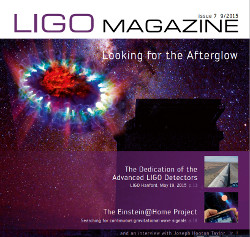
The US-based Laser Interferometer Gravitational-Wave Observatory (LIGO) is supported by an international group of more than 800 scientists from about 80 institutions, the LIGO Scientific Collaboration LSC. Birmingham is contributing to the development, operation and science exploitation of Advanced LIGO, the most sensitive, kilometer-sized gravitational wave observatory in the world.
Issue 7 of the LIGO Magazine is available now. This is an exciting year with the first science run of the new LIGO detectors to begin soon, providing new data to analyse and to search! In "Looking for the Afterglow" and "A Tale of Astronomers and Physicists" we explore the connections between gravitational wave detection and electromagnetic astronomy. Working closer with other astronomers will bring its own interesting challenges. "Adventures of an Observational Astronomer" presents a brief glimpse into a different scientific routine.
We are proud to feature an interview with Joseph Taylor, one of the winners of the 1993 Nobel Prize in physics for the discovery of the first binary pulsar, PSR B1913+16.
You can download the magazine (pdf file) at: http://www.ligo.org/magazine/ The webpage has a new layout to make it easier to find particular articles in previous issues of the magazine.
We hope you find it inspiring and entertaining. Let us know what you think and do tell your friends and colleagues by forwarding this link to them.
News 10/05/2015
Professor Andreas Freise's Inaugural Lecture
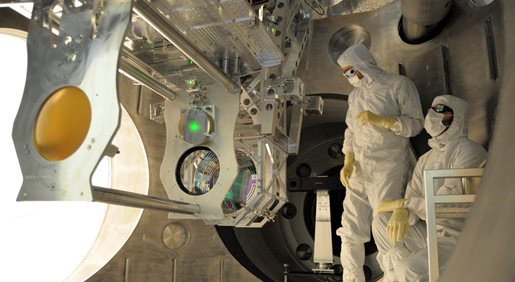
Shining a Light on Black Holes
Professor Andreas Freise
Professor of Experimental Physics
School of Physics and Astronomy
College of Engineering and Physical Sciences
Location Lecture Theatre 117, Physics West Building, followed by a drinks reception in the Physics Library
Date Wednesday 13 May 2015 (5:15pm)
Synopsis
When black holes collide, their enormous gravitational forces create ripples in the fabric of space and time. Although Einstein predicted the existence of these gravitational waves, he was certain that they could never be detected.
Advances in technology, from lasers to modern quantum optics, have fundamentally changed the way we design precision instruments. Measuring a gravitational wave is now a possibility, while remaining one of the greatest challenges in experimental physics. The task is to detect tiny changes in the distance between two objects, a change that is 100,000 times smaller than the core of an atom. Over several decades a new type of laser interferometer has been developed, and several kilometre long gravitational-wave detectors have been constructed around the world.
Now, almost exactly a hundred years after Einstein's predictions, two detectors are beginning to operate with high enough sensitivity to make the first detection of a gravitational wave, exceeding Einstein's imagination. Professor Freise will talk about an extraordinary journey in experimental physics and the invention of new laser instruments to look into the skies and listen for the echoes of black holes and dying stars.
News 20/03/2015
LIGO Magazine
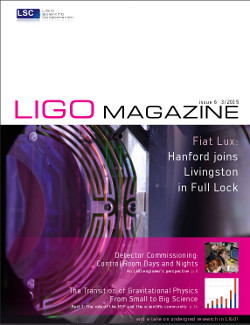
The US-based Laser Interferometer Gravitational-Wave Observatory (LIGO) is supported by an international group of more than 800 scientists from about 80 institutions, the LIGO Scientific Collaboration LSC. Birmingham is contributing to the development, operation and science exploitation of Advanced LIGO, the most sensitive, kilometer-sized gravitational wave observatory in the world.
Following the examples of other large science projects we decided to create the LIGO Magazine, a regular publication to exchange information, news and stories from and with the LSC community. The sixth issue is now available and features the H1 detector in Hanford; the article "Detector Commissioning: Control Room Day and Nights" tells the story of ongoing commissioning work. We learn about the life around the LIGO Hanford site, for example with some beautiful hiking images in "When we're not doing science." The article "The Transition of Gravitational Physics - From Small to Big Science" represents this issue's second main feature, starting a series that will look back at the beginnings of LIGO.
We believe that the magazine is also a good way to find out more about LIGO and the gravitational wave community, and to satisfy your general interest in science and technology. Therefore the magazine is available as a free download (pdf file) at http://www.ligo.org/magazine/
We hope you find it inspiring and entertaining. Let us know what you think and do tell your friends and colleagues by forwarding this link to them.
News 26/02/2015
BritGrav 15, Birmingham
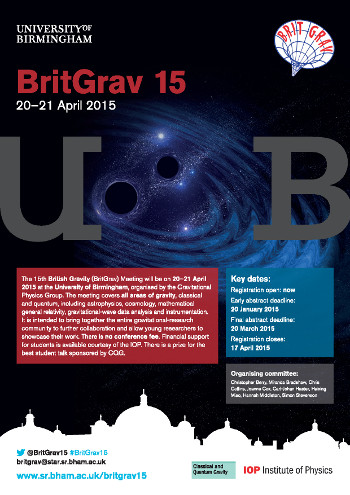
The 15th British Gravity (BritGrav) Meeting will be held on 20-21 April 2015 at the University of Birmingham, organised by the Gravitational Physics Group.
The meeting covers all areas of gravity, classical and quantum, including astrophysics, cosmology, mathematical general relativity, gravitational-wave data analysis and instrumentation. It is intended to bring together the entire gravitational research community to further collaboration and allow young researchers to showcase their work.
We hope that all interested graduate students and post-docs will be able to give talks; there shall be talks by others if time allows. There is a prize for the best student talk sponsored by Classical & Quantum Gravity.
There is no conference fee, but participants are responsible for their own accommodation, meals and travel. Financial support for students from British or Irish institutions is available courtesy of the IOP. Tea and coffee will be provided in breaks.
For further details please see the BritGrav 15 web site
News 17/02/2015
Astronomy in the City

We invite you to attend our programme of free public events, "Astronomy in the City". Join us for stargazing, observing with portable telescopes, observatory visits to use our half metre telescope, talks from our experts about cutting edge astronomy research, and your chance to ask them anything about astronomy!
Tickets for our next event on Wednesday 25th February 2015 are available via our web site.
Please note that due to restricted space, only a limited number of visitors are able to visit the Observatory at each event.
Upcoming Events
This event is part of our 2015 programme, held on the last Wednesday of the month - February 25th and March 25th. Please join our mailing list to keep up to date.
February Programme
This month Simon, one of our PhD students, will talk about observing black holes. What do we do after massive stars explode as brilliant supernovae, and then die as black holes, vanishing from traditional telescopes? With a gravitational-wave observatory, the story is just beginning...
Join us for this exciting talk as well as our popular regulars: observatory trips, observing on campus, March's night sky, and "Ask the expert".
News 08/01/2015
Birmingham Nottingham extragalactic workshop 2015

The Birmingham Nottingham extragalactic workshop series consists of informal 2-day events, involving typically ~50 participants, with the aim of bringing together researchers in related strands of research in a topical and well-focussed area of extragalactic astronomy.
This year's topic is Cosmic Overdensities through Cosmic Time. We will review recent progress in our understanding of galaxy groups and clusters back to z=2, and discuss what observational, theoretical, and algorithm developments are required to take full advantage of the exciting opportunities post-2020, including LSST.
For further details please see the Extragalactic workshop website
News 08/12/2014
BritGrav 15, Birmingham

The 15th British Gravity (BritGrav) Meeting will be held on 20-21 April 2015 at the University of Birmingham, organised by the Gravitational Physics Group.
The meeting covers all areas of gravity, classical and quantum, including astrophysics, cosmology, mathematical general relativity, gravitational-wave data analysis and instrumentation. It is intended to bring together the entire gravitational research community to further collaboration and allow young researchers to showcase their work.
We hope that all interested graduate students and post-docs will be able to give talks; there shall be talks by others if time allows. There is a prize for the best student talk sponsored by Classical & Quantum Gravity.
There is no conference fee, but participants are responsible for their own accommodation, meals and travel. Financial support for students from British or Irish institutions is available courtesy of the IOP. Tea and coffee will be provided in breaks.
For further details please see the BritGrav 15 web site
News 24/11/2014
Astronomy in the City
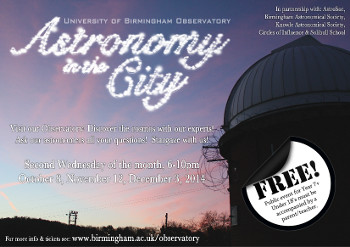
We invite you to attend our programme of free public events, "Astronomy in the City". Join us for stargazing, observing with portable telescopes, observatory visits to use our half metre telescope, talks from our experts about cutting edge astronomy research, and your chance to ask them anything about astronomy!
Astronomy in the City events are strictly all ticket, and begin in the Poynting Building on our Edgbaston campus, within easy reach of local transport links.
Please note that due to restricted space, only a limited number of visitors are able to visit the Observatory at each event.
Upcoming Events
Our next event is Wednesday December 3rd 2014, 6-10pm. Booking essential!
This event is part of our 2014 programme, held on the second Wednesday of the month -
October 8th, November 12th and December 3rd. Please join our mailing list to keep up to date.
December Programme
- 6:00pm Welcome to the University of Birmingham Observatory
- 6:10pm Exploring the Night Sky in Decembera
- 6:25pm Christmas Talk - Jingle Bell Rock
- 6:40pm Ask our Experts your Astronomical Questions
- 7:00pm Break for Refreshments
- 7:15pm Observing
News 28/08/2014
LIGO Magazine
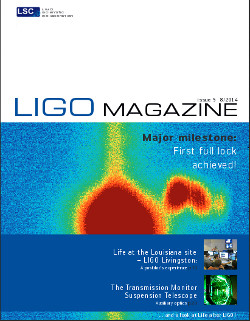
The US-based Laser Interferometer Gravitational-Wave Observatory (LIGO) is supported by an international group of more than 800 scientists from about 80 institutions, the LIGO Scientific Collaboration LSC. Birmingham is contributing to the development, operation and science exploitation of Advanced LIGO, the most sensitive, kilometer-sized gravitational wave observatory in the world.
Following the examples of other large science projects we decided to create the LIGO Magazine, a regular publication to exchange information, news and stories from and with the LSC community. The fifth issue is now available, with more than 30 pages of entertaining stories and fascinating photos from the installation of the Advanced LIGO detectors.
We believe that the magazine is also a good way to find out more about LIGO and the gravitational wave community, and to satisfy your general interest in science and technology. Therefore the magazine is available as a free download (pdf file) at http://www.ligo.org/magazine/
We hope you find it inspiring and entertaining. Let us know what you think and do tell your friends and colleagues by forwarding this link to them.
News 01/03/2014
Marie Curie Fellow
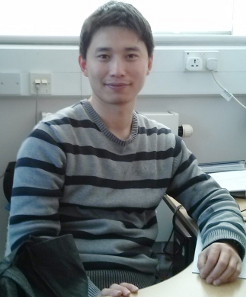
Haixing Miao has been awarded a Marie Curie International Incoming Fellowship to work at the University of Birmingham on "Exploring quantum aspects of gravitational wave detectors" from March 2014
Haixing's research will be studying the role of quantum mechanics in determining the fundamental limitation to the sensitivity of gravitational-wave (GW) detectors. Making use of the knowledge on numerical modelling and instrumentation from his colleagues in the GW research group, such a study will lead to new techniques for enhancing sensitivities of existing advanced GW detectors, and also provide guidance for research and development for quantum-limited measurements.
News 27/02/2014
Faculty Position

The School of Physics and Astronomy at the University of Birmingham invites applications for a tenured faculty position in Astrophysics at the Lectureship level, or exceptionally at a higher level.
The Astrophysics Group has a wide range of research activities, spanning theory, observations and instrumentation. Research areas include galactic and extra-galactic astrophysics, gravitational lensing and cosmology, exoplanets, and gravitational-wave science.
The Astrophysics group consists of 11 academic staff, 8 postdoctoral research staff, 22 postgraduate students and 4 technical and support staff. The group is one of the eight research groups active in the School of Physics and Astronomy, which counts about 40 permanent academic staff. The group has a strong track record of research grant funding. It is supported by an STFC consolidated grant, and a variety of other grants from several sources, such as STFC, EPSRC, EC and the Leverhulme Trust. Members of the group play important roles in major international efforts and collaborations, such as the Euclid Consortium, XXL, LoCuSS, GAMA, the LIGO Scientific Collaboration, the GEO Collaboration, the European and International Pulsar Timing Array Collaboration, and the Einstein gravitational-wave Telescope. Excellent technical facilities for the design, construction and testing of space- and ground-based instrumentation support the strong experimental programme in the area of gravity and gravitational waves. Computing infrastructure includes a computer cluster for gravitational-wave research and access to the University-wide BlueBear high-performance cluster.
The appointment is expected to complement and expand existing research activities. We encourage especially applications in the areas of extra-galactic astrophysics, cosmology and gravitational-wave instrumentation, but exceptional individuals in any field will be considered. The successful applicant will also contribute to the School's undergraduate and postgraduate teaching.
Informal enquiries may be addressed to Professor Alberto Vecchio (av [at] star.sr.bham.ac.uk).
The closing date for applications is 31 March 2014.
Applications should be made by completing the on-line application form at http://www.birmingham.ac.uk/staff/jobs/, post number 13866.
Candidates must also submit a research statement and arrange for three letters of reference to be sent, by the closing date, to: Miss Joanne Cox School of Physics and Astronomy University of Birmingham Edgbaston B15 2TT United Kingdom Email: j.s.cox [at] bham.ac.uk
News 11/02/2014
Astronomy in the City
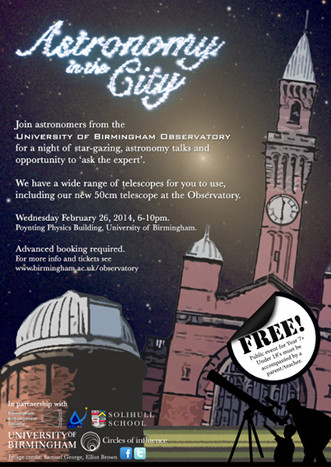
We invite you to attend the second of our "Astronomy in the City", series of free public events, on February 26, 2014.
The University of Birmingham Observatory team invite you to attend our programme of free public events, "Astronomy in the City". Journey with us from star gazing all the way to exploring the night sky with our powerful new telescope. Along the way, members of the University's AstroSoc, and the Birmingham Astronomical Society (BAS) will show you how to use their portable telescopes. Tours of our Observatory, including observing with our research telescope will also be offered. Our experts will be on hand to answer your questions throughout the evening, and in a special "Ask the Expert" session. The event starts in the Poynting Building on our Edgbaston campus, within easy reach of local transport links. We can accommodate small groups of upto 8 visitors at a time at our Observatory. We will therefore operate a ballot system on the night, with a likely maximum of 40 people able to visit the Observatory.
The event starts in the Poynting Building on our Edgbaston campus, within easy reach of local transport links.
Provisional Programme:
- 6:00pm Welcome and introduction to the Observatory
- 6:20pm What's up? Exploring February's night sky
- 6:40pm Why? How? Ask our experts your astronomical questions
- 7:00pm Break for refreshments
- 7:15pm Observing begins
This is an all ticket event. Admission is only available to people with a ticket. Further information and tickets are available via our web-site
We look forward to meeting many of you in February!
News 05/12/2013
Astronomy in the City
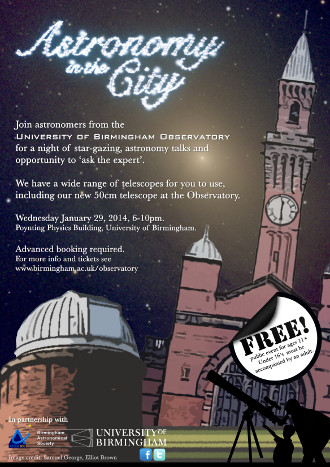
We invite you to attend the opening night of "Astronomy in the City", our new series of free public events, on January 29, 2014.
Journey with us from star gazing, all the way to exploring the night sky with our powerful new telescope. Along the way, members of the University's Astrosoc, and the Birmingham Astronomy Society (BAS) will show you how to use their portable telescopes. Tours of our Observatory, including observing with our research telescope will also be offered. Our experts will be on hand to answer your questions throughout the evening, and in a special "Ask the Expert" session.
The event starts in the Poynting Building on our Edgbaston campus, within easy reach of local transport links.
Provisional Programme:
- 6:00pm Welcome and introduction to the Observatory
- 6:20pm What's up? Exploring February's night sky
- 6:40pm Why? How? Ask our experts your astronomical questions
- 7:00pm Break for refreshments
- 7:15pm Observing begins
This is an all ticket event. Admission is only available to people with a ticket. Further information and tickets are available via our web-site
We look forward to meeting many of you in January!
News 06/11/2013
The University of Birmingham opens its new telescope to the public

A new era of astronomy starts at the University of Birmingham this month, when students and researchers start to observe the night sky with a new state-of-the-art telescope located at the University’s observatory on the outskirts of the city.
The new telescope, which is the most powerful within 50 miles of Birmingham, will revolutionize the learning opportunities for students, and will also be available for the community and local astronomy groups to use.
The Observatory has been part of the Birmingham student experience since the 1980s and has been used by generations of undergraduate students on the University’s renowned Physics and Astrophysics degree programme.
With a diameter of half a meter, and high quality optical design matching that of professional research telescopes, the new telescope is the most powerful telescope within easy reach of the West Midlands community. Dr Graham Smith, Director of the University of Birmingham’s Observatory said " This is a major landmark for astronomy and science in the West Midlands, I encourage our community -- students, and members of the public alike -- to make the most of this wonderful investment. I’m looking forward to developing links with the West Midlands community in the years ahead."
The University of Birmingham Observatory (UBO) will launch a brand new programme of Public Astronomy Nights starting in January 2014. These events will include the opportunity to visit the Observatory and to use the new telescope. Details will be announced in December 2013 via the Observatory website. The public may also follow the Observatory on Twitter, and sign up for future email updates by emailing their name to [email protected]
News 14/06/2013
Cosmic giants shed new light on dark matter

Astronomers at the University of Birmingham, Academica Sinica in Taiwan, and the Kavli Institute of Physics and Mathematics of the Universe in Japan, have found new evidence that the mysterious dark matter that pervades our universe behaves as predicted by the ’cold dark matter’ theory known as ’CDM’.
At a press conference in Taipei the team of astronomers report their measurements of the density of dark matter in the most massive objects in the universe, namely galaxy clusters. They found that the density of dark matter decreases gently from the centre of these cosmic giants out to their diffuse outskirts. The fall in dark matter density from the centre to the outskirts agrees very closely with the CDM theory.
Almost eighty years after the first evidence for dark matter emerged from astronomy research, few scientists seriously doubt that it exists. However astronomers cannot see dark matter directly in the night sky, and particle physicists have not yet identified the dark matter particle in their experiments.
’What is dark matter?’ is therefore a big unanswered question facing astronomers and particle physicists, especially because there is strong evidence that 85% of the mass in the universe is invisible dark matter.
The team, led by Dr Nobuhiro Okabe (Academia Sinica) and Dr Graham Smith (Birmingham), used the Subaru telescope in Hawaii to investigate the nature of dark matter by measuring its density in fifty galaxy clusters, the most massive objects in the Universe.
The density of dark matter in galaxy clusters was measured using the effect of gravitational lensing. As predicted by Einstein, gravitational lensing is the change in the direction and shape of a light beam as it travels through the curved space close to a massive object. The apparent shape and position of distant galaxies that astronomers observe are therefore altered by the dark matter in cosmic giants.
What does the future hold for the team’s continued research on dark matter? Smith noted ’We don’t stop here. For example, we can improve our work by measuring the dark matter density on even smaller scales - right in the centre of these galaxy clusters. Adding measurements on smaller scales will help us to learn more about dark matter in the future.’
For more information, please see the LOCUSS web site and the University of Birmingham press release
News 21/03/2013
LIGO Magazine

The US-based Laser Interferometer Gravitational-Wave Observatory (LIGO) is supported by an international group of more than 800 scientists from about 80 institutions, the LIGO Scientific Collaboration LSC. Birmingham is contributing to the development, operation and science exploitation of Advanced LIGO, the most sensitive, kilometer-sized gravitational wave observatory in the world.
Following the examples of other large science projects we decided to create the LIGO Magazine, a regular publication to exchange information, news and stories from and with the LSC community. The second issue is now available, with more than 30 pages of entertaining stories and fascinating photos from the installation of the Advanced LIGO detectors.
We believe that the magazine is also a good way to find out more about LIGO and the gravitational wave community, and to satisfy your general interest in science and technology. Therefore the magazine is available as a free download (pdf file) at http://www.ligo.org/magazine/
We hope you find it inspiring and entertaining. Let us know what you think and do tell your friends and colleagues by forwarding this link to them.
News 26/02/2013
Postdoctoral Research Position

Applications are invited for a STFC-funded Postdoctoral Fellow position in the Astrophysics and Space Research Group at the University of Birmingham.
Gravitational-wave astrophysics and data analysis
The Gravitational-Wave Group at the University of Birmingham invites applications for a post-doctoral position in the area of gravitational-wave astrophysics and data analysis, with emphasis on compact-object binary systems.
Applicants with a background in gravitational-wave physics, astronomy/astrophysics, theoretical and/or numerical relativity and data analysis are welcome to apply.
The Birmingham Gravitational-wave Group consists of faculty members Will Farr (from 1st October 2013), Andreas Freise, Ilya Mandel and Alberto Vecchio, four postdoctoral research associates and nine post-graduate students. The group has a broad range of research interests including compact object astrophysics, gravitational-wave observations and data analysis, instrumentation and advanced interferometry. The group is member of the GEO Collaboration, the LIGO Scientific Collaboration, and the European Pulsar Timing Array Collaboration. The group has excellent laboratory and computer facilities.
For further information see here
News 04/01/2013
Postdoctoral Research Positions

Applications are invited for three STFC-funded Postdoctoral Fellow positions in the Astrophysics and Space Research Group at the University of Birmingham.
Galaxy groups and clusters
Two fellows will work on a joint observational and theoretical programme to investigate the astrophysics and mass function of galaxy groups and clusters to z~1, and the impact of selection biases on our understanding. Observational data for this programme come from international multi-wavelength surveys, in which Birmingham faculty are prominent, including XXL, LoCuSS and GAMA. Ongoing observations during the funding period include X-ray follow-up, deep DECam weak-lensing observations, and near-infrared observations at UKIRT and CFHT. On the theoretical side we have close links with simulators, including those responsible for the OWLS simulation, and its "Cosmo-OWLS" successor.
Relevant skills and interests for these positions include: X-ray data analysis, faint galaxy shape measurement for weak-lensing, strong/weak gravitational lens modelling, intra-cluster light measurement, dynamical mass analysis, and testing observational analysis/modelling methods using simulations. Candidates with observing experience over a range of wavelengths are also encouraged to apply. A PhD in astronomy or physics is required.
For further information see here
Gravitational-wave astrophysics and data analysis
The Gravitational-Wave Group at the University of Birmingham invites applications for a post-doctoral position in the area of gravitational-wave astrophysics and data analysis, with emphasis on compact-object binary systems.
Applicants with a background in gravitational-wave physics, astronomy/astrophysics, theoretical and/or numerical relativity and data analysis are welcome to apply.
The Birmingham Gravitational-wave Group consists of faculty members Will Farr (from 1st October 2013), Andreas Freise, Ilya Mandel and Alberto Vecchio, four postdoctoral research associates and nine post-graduate students. The group has a broad range of research interests including compact object astrophysics, gravitational-wave observations and data analysis, instrumentation and advanced interferometry. The group is member of the GEO Collaboration, the LIGO Scientific Collaboration, and the European Pulsar Timing Array Collaboration. The group has excellent laboratory and computer facilities.
For further information see here
News 12/10/2012
LIGO Magazine
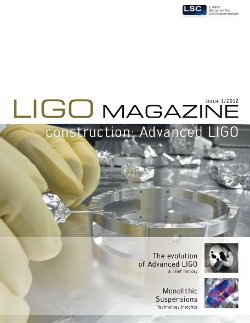
The US-based Laser Interferometer Gravitational-Wave Observatory (LIGO) is supported by an international group of more than 800 scientists from about 80 institutions, the LIGO Scientific Collaboration LSC. Birmingham is contributing to the development, operation and science exploitation of Advanced LIGO, the most sensitive, kilometer-sized gravitational wave observatory in the world.
Following the examples of other large science projects we decided to create the LIGO Magazine, a regular publication to exchange information, news and stories from and with the LSC community. The inaugural issue is now available, with more than 30 pages of entertaining stories and fascinating photos from the installation of the Advanced LIGO detectors.
We believe that the magazine is also a good way to find out more about LIGO and the gravitational wave community, and to satisfy your general interest in science and technology. Therefore the magazine is available as a free download (pdf file) at http://www.ligo.org/magazine/
We hope you find it inspiring and entertaining. Let us know what you think and do tell your friends and colleagues by forwarding this link to them.
News 19/03/2012
The first 'Garden Variety' Black Hole Discovered outside our local Neighbourhood!

Black holes are everywhere. There's a supermassive one at the heart of each large galaxy, and millions of ordinary stellar-mass ones sprinkled throughout each galaxy, if our theories of stellar evolution are correct. yet, they are notoriously difficult to detect, since they don't emit any light. If found, generally as a consequence of its intense gravity, it is very difficult to establish a cosmic source as a black hole. Consequently, most known black holes are of rather exotic varieties- they are either ultra-luminous sources, due to their overwhelmingly hungry accretion, or they could have masses comparable to the most massive stars.
Yet, in our own galaxy, and in those in our immediate neighbourhood (the Local group), researchers have started to establish the existence of the ordinary garden variety black holes, belonging to the most commonly occurring mass range, and detectable in X-ray binary systems, accreting at a fraction of their Eddington luminosity . So far, such "ordinary" black holes have not been found and studied in detail outside the Local group.
Cen AAnalysing data from six 100 ks Chandra observations of giant elliptical galaxy Centaurus A, PhD student Mark Burke, under the supervision of Somak Raychaudhury at the University of Birmingham, and working with an international team led by Ralph Kraft of the Harvard-Smithsonian Center for Astrophysics, detected an object 50,000 times the brightness of our sun. A month after the initial detection, the source had dimmed by more than a factor of 10, and subsequently 100; disappearing beneath our ability to detect. This behaviour is characteristic of a black hole low mass X-ray binary during the final stages of outburst, an assertion supported further by the results of X-ray spectral fitting. It is likely that this source is the best candidate for a 'conventional' black hole low mass X-ray binary outside of the Local Group, and is more typical of stellar mass black holes we observe in our own galaxy.
The yellow arrow in the picture identifies the position of the black hole transient inside Cen A. The location of the object is coincident with gigantic dust lanes that obscure visible and X-ray light from large regions of Cen A. Other interesting X-ray features include the central AGN, powerful relativistic jet and a large lobe that covers most of the lower-right of the image. There is also a lot of hot gas. In the image, red indicates low energy, green represents medium energy, and blue represents high energy light.
The paper, accepted for publication in the Astrophysical Journal, where we present these results, can be found here. For more information, please contact Mark Burke.
News 17/10/2011
Solar Mass Ejection Imager mission operations come to an end!
On 28th September 2011, the Solar Mass Ejection Imager (SMEI) instrument aboard the US Navy Coriolis spacecraft was switched off and mission operations ceased after nearly 8 years of successful operation in orbit.
The SMEI instrument was largely designed and built at the Astrophysics and Space Research Group with funding from the US Air Force Research Laboratory and the University of Birmingham, and was launched aboard Coriolis on 6th January 2003.
SMEI consists of 3 wide-angle optical cameras which are mounted on the spacecraft so that during each orbit they sweep around the sky enabling an image of the entire sky, with the exception of a fairly small region around the Sun, to be recorded. The main scientific objective of SMEI was to detect Coronal Mass Ejections (CMEs), vast clouds of diffuse plasma erupting out of the solar corona which, if they impact with the Earth, can cause damage to satellites, disrupt radio communications, produce large-scale outages on terrestrial power distribution systems and other undesirable effects of "space weather".
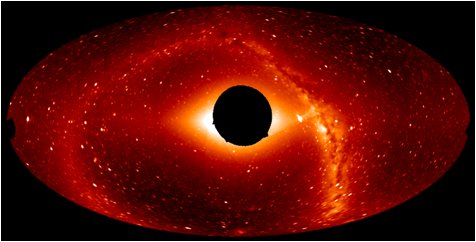
The picture shows an "all-sky" image obtained by SMEI. The entire Milky Way is visible, together with the zodiacal light surrounding the Sun, the Magellanic Clouds (near the bottom of the image), and the Pleiades and Orion's Belt (close to the left side). In addition to detecting and tracking many hundreds of CMEs, SMEI has produced many other important scientific results and discoveries, including observations of high altitude aurorae, variable stars and novae, and comets and cometary tail interactions.
For further information see:
Birmingham University SMEI site
UCSD Solar and Heliospheric Physics Archive
News 14/09/2011
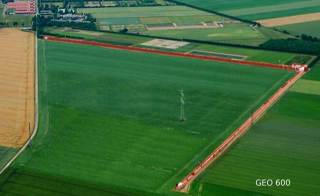
The picture above shows an aerial view of the
L-shaped GEO 600 detector (the detector arms
have been marked with red colour).
Squeezed light gives gravitational wave detector a boost in sensitivity
Gravitational wave detectors are looking for tiny ripples in space time, by monitoring the distance between kilogram-sized masses with a laser beam. The detectors' extreme sensitivity make them "see" some of the fundamental properties of the instrument itself, such as the thermal fluctuations of the atoms in the test mass, or the quantum fluctuations in the laser light. The latter is called `shotnoise' and poses a limit to the sensitivity of current detectors.
With the `squeezed light' method scientists from the GEO 600 collaboration use quantum physics in order to reduce the effect of shotnoise. This new type of laser light developed by scientists from the Max Planck Society and the Leibniz Universität Hannover improves the measuring accuracy of the gravitational wave detector GEO 600 by around 50 percent and thus increases its effective sensitivity. This is the first time this technology has been used outside of a test laboratory anywhere in the world. The results are published in the specialist journal Nature Physics.
The squeezed light laser has been undergoing a longer test phase since April last year at GEO 600 and is now being used in the search for gravitational waves. The application of squeezed light technology has thus passed the acid test. Our American colleagues plan to soon test a squeezed laser on the LIGO detectors
News 09/09/2011
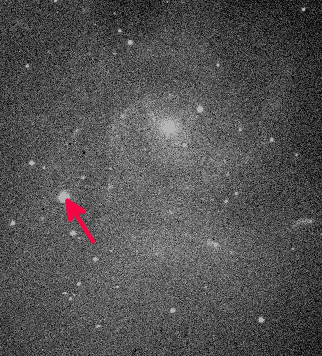
Supernova in Ursa Major
On August 23rd a star in the Pinwheel Galaxy (M101) perished in a supernova explosion. At 21 million light-years from Earth this is the closest star explosion of its type observed since 1986. The object, SN 2011fe, has brightened so much that it is now possible to view with binoculars ([instructions on how to observe]). On 8th September, astronomers (Dr Samuel George, Elizabeth George and Richard Pearson) using the University of Birmingham Observatory on a cloudy night managed to take an image of the galaxy clearly showing the supernova (as indicated by the arrow ):

We took a [colour image of M101] a while back and here (on a similar scale/rotation) is a comparison pre-and-post-supernova:
News 22/08/2011
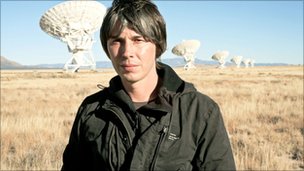
Astronomy and physics are cool!
Applications for physics courses at university have risen by more than 17% on last year and astronomy is up by an even more impressive 40%. This is probably due to the combination of excitement and good job prospects offered by these challenging subjects, as discussed in the this BBC News article .
News 10/06/2011
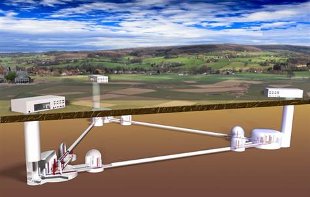
Design study for large new European gravitational wave project sparks media interest.
On the 20th of May scientists from all over Europe presented a design study for an advanced observatory capable of making precision measurements of gravitational waves minute ripples in the fabric of spacetime: The Einstein Observatory (ET) is a so-called third-generation gravitational-wave detector, which will be 100 times more sensitive than current instruments.
The presentation of the 500 pages design study report has sparked great interest from national and international media, see, for example, the news coverage from Nature, Science and Physics World:
- Nature: "Europeans push ahead with gravitational wave observatory"
- Science: European Scientists Launch Design of New Gravitational Wave Telescope
- Physics World: "Researchers unveil the Einstein Telescope"
The Birmingham Gravitational Wave Group is centred on the observation of the universe in the gravitational wave band, and on testing gravity at new scales. The group is a member of the GEO collaboration and the LIGO Scientific Collaboration and has played a leading role in the design of the Einstein Telescope. Further links:
News 08/04/2011

Phase effects in gaussian beams in diffraction gratings
We would like to congratulate our student Deepali Lodhia who was awarded the prize for the best poster at the recent LIGO-VIRGO conference, the collaboration meeting between the LIGO and VIRGO gravitational wave detectors, which was held in Arcadia - California on March 13-18, 2011.
More than 300 scientist from all the world attended this conference and about 50 posters were presented on all different subjects of research, from instrumental science to data analysis and astrophysics. Here you can see a picture of Deepali presenting the poster!
News 22/03/2011
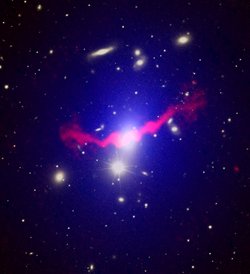
Enriching the Intracluster Medium
Galaxies are typically found in groups or clusters, some of which have several hundred members, surrounded by a halo of hot, X-ray emitting gas. Giant elliptical galaxies are often found at the centres of these clusters, and the supermassive black holes in their cores are believed to play a vital role in governing the state of the hot halo. As material is drawn into the black hole, jets of relativistic plasma can be thrown out far beyond the galaxy, colliding with and heating the surrounding gas, and lifting material out of the galaxy to mix with the halo.
Birmingham astronomers Ewan O'Sullivan and Somak Raychaudhury, working with colleagues in the USA, have used a combination of deep Chandra X-ray data and low-frequency radio observations from the Indian Giant Metrewave Radio Telescope to examine this process around the elliptical galaxy NGC 6051, in the poor cluster AWM 4. The image to the right shows the galaxies (and foreground stars) in white, X-rays from the hot gas halo in blue, and radio emission from the jets thrown out by the black hole in red. The jets extend about one hundred thousand light years from the black hole, and have taken about 170 million years to grow to this size. Gas from the central elliptical, enriched with Iron and other elements produced by supernovae, has been transported out of the galaxy by the jets, mixing with the surrounding halo. Around a million solar masses of Iron has been lifted out of the galaxy during the current phase of jet activity, and it seems likely that this type of gas mixing has an important influence on the development of many groups and clusters of galaxies in the nearby Universe.
For more information, see the Smithsonian Astrophysical Observatory's Weekly Science Update on AWM 4, or the two published papers.
News 11/03/2011

Space Time Quest is here !
Design your own gravitational wave detector and see whether you can beat the experts!
Space Time Quest is a manager-simulation type game. The player can use a limited budget to design a gravitational wave detector. The goal is to maximise the sensitivity by adjusting several subsystem parameters correctly. This game has been developed as part of our outreach programme in the Gravitational Wave Group; our aim was to create a fun game that is easy to play, looks good and gives some insight into the complexity of gravitational wave detectors.
Get the game and more info here
At the moment the game does not come with much explanation; however a simple 'how to play' video is available here here
For news and updates about the game and related activities, follow us on twitter
News 02/03/2011
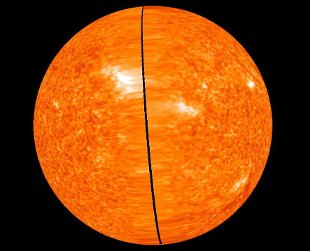
Seeing the Sun from all Angles
A unique 360° view of the Sun was unveiled on Sunday 6 February 2011 (so-called “super Sun-day”) when NASA’s two STEREO spacecraft were aligned exactly opposite each other on either side of the Sun. The spacecraft were launched in October 2006 and have been progressively been moving away from the Earth in their respective orbits around the Sun.
All the camera systems on board the spacecraft were built and tested in the Astrophysics and Space Research Group of the School of Physics and Astronomy, in collaboration with colleagues at the Rutherford Appleton Laboratory. The image opposite is a composite of images taken in the extreme-ultraviolet by cameras on the two spacecraft, showing the far side of the Sun.
The 360° coverage from STEREO is enhanced by NASA's recently-launched SDO (Solar Dynamics Observatory) mission which images the Sun in high resolution, from a near-Earth orbit. As the STEREO probes continue flying around the far side of the Sun, an area of unseen solar territory on the near side will increase, but SDO's cameras will play a vital role in filling this gap and ensuring that we can view the entire solar surface for a number of years to come.
These unprecedented images can perhaps be likened to the first images of the far side of the Moon taken some 50 years ago. However, in many ways the significance for mankind is probably much greater because of the effect that the Sun and "space weather" can potentially have on our advanced technological society by damaging satellites, disrupting communications, etc. Having the ability to image the entire disk of the Sun, including the far side, will enable us to continually monitor solar active regions, sunspots and solar flares, etc as they rotate around the Sun and hence improve our understanding of solar activity and our ability to predict space weather.
For further information see:
News 10/02/2011
Cosmic feedback and galaxy groups
Most of the normal atomic matter in the Universe appears to be hot, with a temperature exceeding 100,000 K. The reason for the high temperature of most of this material is believed to be "cosmic feedback": energetic jets from supermassive black holes and galaxy-scale winds powered by supernova explosions heat the surrounding gas. Understanding these complex feedback processes is one of the biggest challenges in astrophysics.
We are attacking this problem in a collaboration with Dr. Ian McCarthy from the University of Cambridge, and other European scientists. This project compares the observed properties of groups of galaxies with cosmological simulations. The intergalactic gas in groups (see for example the news item from 16 October 2009) is very sensitive to the effects of feedback, and a range of simulations involving different feedback mechanisms have been used. The conclusions, published in two recent papers (1,2) suggest that the feedback is dominated by massive black holes in active galaxies operating at redshifts of 2-4, when the Universe was less than a quarter of its present age. In the simulation shown above (click image for video) a galaxy group grows from small density fluctuations in the early Universe. The left panel shows the density of gas in the simulation, whilst the right panel shows heavy elements produced within massive stars, and ejected into the surrounding gas by cosmic feedback events.
News 21/09/2010
LOFAR-UK Official opening

The first major radio telescope to be built in Britain for decades, LOFAR-UK (Low Frequency Array, UK branch). was opened by Dame Jocelyn Bell Burnell at a ceremony at STFC's Chilbolton station in Hampshire (Monday 20 September). It will help answer questions such as "how did black holes grow in our universe?" and "what is the origin of magnetic fields on a cosmic scale?"
The University of Birmingham is one of 22 Universities in the UK who have contributed towards its construction. The telescope, which is part of the European LOFAR array of telescopes, is one of about 36 stations spread over Europe from Sweden to Germany and the UK, with headquarters in the Netherlands. The UK station, which was opened today, improves the resolution of the entire array by a factor of two, since the resolution of a radio telescope array depends on the distance of separation between the furthest components of the array.
The LOFAR array will "listen" to the Universe at FM radio frequencies (30-200 MHz). Much of this range of frequencies has not hitherto been covered by any major telescope- recent developments in technology enable LOFAR to operate at these frequencies for the first time. Important serendipitous discoveries are therefore highly likely. During the ceremony, guests were able to observe a pulsar in real time using the HBA array (pictured above) of the Chilbolton station.
For more information, please visit:
University of Birmingham press release
News 16/08/2010

'Looking for Black Holes with Lasers' at the British Science Festival
September sees the arrival of the British Science Festival in Birmingham! As part of the national celebration of all that is science, we are putting together an exhibition entitled 'Looking for Black Holes with Lasers'. Black holes are very difficult to see directly, but if two black holes collide they send waves through the fabric of our universe, strong enough to be detected many galaxies away. Come along and find out how we use lasers to discover black holes by observing the gravitational radiation that they emit. This exhibition will boast two new interactive computer games from the Birmingham gravitational wave group, as well as demonstration models of gravitational wave detector technology and talks from the experts in the field.
For more information, please visit:
http://www.sr.bham.ac.uk/gwgroup/bsf2010
The technology demonstrations will include an operational model of a gravitational wave detector mirror suspension system controlled using the Birmingham designed and manufactured 'BOSEM' sensor/actuator system, and a table-top Michelson interferometer. Talks will be given at 12:00 each day throughout the exhibition period by our resident experts; Alberto Vecchio, Andreas Freise and Mike Cruise on the 16th, 17th 18th of September respectively.
This exhibition will take place from Thursday 16th to Saturday 18th of September between 10:00 and 17:00 in Physics West 117/125 (please note that the exhibition shall NOT take place on Sunday the 19th, contrary to the information provided in some versions of the University of Birmingham program).
News 22/02/2010
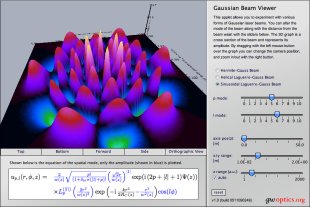
gwoptics website launched
We have just launched a new website, hosting interative software tools and information about numerical simulations of optical systems and gravitational wave detection:
The aim of the site is to provide numerical tools for researchers and to promote the use of interactive applications for outreach to the wider community. Yes, we have interactive webpages... have a look for yourself!
The search for gravitational waves is one of the major challenges of experimental physics today. During the design and realisation of current detectors, many new technologies have been invented in order to reach new records in sensitivity. Numerical simulations have played a major role in this process; they are indispensable tools in optical design, detector tuning and data analysis.
Many of the software tools used for gravitational wave research are by-products of the design process, having been developed explicitly to fill a gap in the otherwise available tools. Our group is leading the simulation activity of the GEO 600 collaboration and maintains one of the main interferometer simulation tools in the field. In order to make these tools accessible for a wider audience, such as scientists in other fields, we have created gwoptics.org.
Interactive 'sketches' by undergraduate and school students can also be found on the website, giving a fresh insight into some of the techniques used in gravitational wave detection. Hopefully by seeing the high quality of these applications, created largely by non-expert programmers, people will be encouraged to investigate the outreach possibilities such projects can offer.
So please, go along and enjoy the site... you can even have a go at blasting some asteroids if you need a break from all that science!
News 16/10/2009

Information about large format poster printing can be found at http://www.sr.bham.ac.uk/plotter/
News 16/10/2009
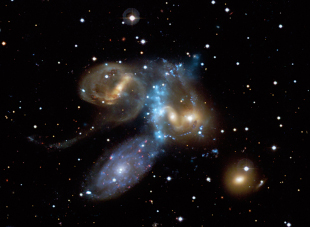
Stephan's Quintet: Building galaxy groups through cosmic collisions
Most galaxies reside in small groups, typically consisting of a handful of spirals, each containing cold gas which over time forms stars. However, in more massive groups and galaxy clusters, we observe more evolved elliptical and lenticular galaxies which contain little cold gas but which are embedded in extensive haloes of ten-million degree hot gas. While it is widely accepted that both galaxies and groups grow through mergers, it is unclear what happens to the cold gas in galaxies and how the hot gas halo is formed as groups evolve.
The combined Chandra X-ray/CFHT optical image above shows Stephan's Quintet, a galaxy group in the process of developing a hot halo. Four of the group member galaxies are visible in the image (three spiral and one elliptical) as well as the foreground spiral galaxy NGC 7317, on the lower left. The curved light blue ridge running down the centre of the image is X-ray emission from a filament of gas that has been tidally stripped out of the galaxies and heated by a shock wave driven by the spiral galaxy NGC 7318b, which has collided with the filament at a velocity of over three million kilometers per hour. The group also contains a larger halo of hot X-ray emitting gas (not visible in this image) whose mass matches estimates of the mass of cold gas missing from the galaxies. This suggests that most or all of the hot gas may have been produced through heating of cold gas during galaxy collisions and interactions, something of a departure from the current theories of group evolution.
Dr. Ewan O'Sullivan, who has recently joined the Astrophysics and Space Research group, will be working with Dr. Somak Raychaudhury to follow up this discovery with X-ray and radio observations of other evolving groups. For further information see this Chandra article or the published paper.
News 11/09/2009

Travel through space with Lucy Hawking
The next talk in the Tea, Talk and Telescope series will take place on Wednesday 7th October at 6.30pm (with coffee and tea at 6pm) in the Large Lecture Theatre of the Poynting Physics building of the University of Birmingham. The talk is "Travel through space with Lucy Hawking - George's Cosmic Treasure Hunt" and is rescheduled from the May event.
This event is FREE for all.
"Explore the wonders of the Universe with author Lucy Hawking as she presents a young person's guide through the galaxy! Lucy will be talking about her latest book, `George's Cosmic Treasure Hunt,' the follow-up to the brilliant 'George's secret key to the universe'. Discover the mysteries of physics, science and the universe with George, his new friends next door - the scientist Eric and his daughter, Annie - and a super-intelligent computer known as Cosmos, which can take them to the edge of a black hole and back again."
For information and directions please see our talks page
News 04/08/2009
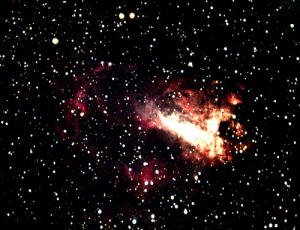
University of Birmingham Observatory 25th Anniversary
This year the University of Birmingham Observatory is celebrating its 25th year of full operation. The facility opened in 1984 by the then Astronomer Royal Prof. F.G. Smith and has been used by over 300 undergraduate students for research projects. It has been very succesful in enagaging astronomy with the general public. The Observatory was upgraded in 2006, to add a Meade LX200R 14 with an SBIG STL-1001E CCD (1024x1024 pixel) for direct imaging. The main instrument is a computer controlled 0.4m Cassegrain, which is now used exclusively for CCD spectroscopy. The observatory is scheduled every weekday night in term time. The observatory is used by third year students from October to February. Here students work in groups of four and undertake an observing project designed by themselves. Students have access to the observatory for second year project work in February to April. The telescope has also been used to take images of the fantastic objects in the night sky and a selection of these can be found in the observatory image gallery.
News 14/07/2009
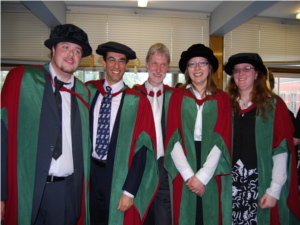
Bumper crop of Astrophysics PhD graduates
At this year's degree ceremony in the Great Hall on July 13th, no fewer than four of our talented postgraduate students were awarded their doctorate degrees by the vice-chancellor Prof. David Eastwood. Seen here (from left to right) in their Birmingham PhD robes are Dr. Samuel George, Dr. Aliakbar Dariush, Prof. Trevor Ponman (Head of the Astrophysics and Space Research Group - also a Birmingham PhD), Dr. Ria Johnson and Dr. Emma Robinson. Between them their research ranges from exoplanets to galaxy groups and gravitational wave detection. Ali and Emma are now doing postdoctoral research at Cardiff and Potsdam, whilst Sam is about to move to Calgary, and Ria is taking up a staff position at the Office for National Statistics.
News 26/06/2009
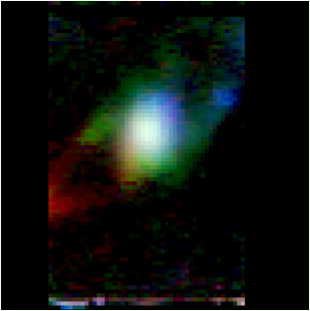
First light for WiFeS!
What physical processes cause actively star-forming spiral galaxies to lose their gas supply, stop forming new stars and transform into red, dead elliptical galaxies when they encounter the dense environments of massive galaxy clusters ?
Does the "wind" infalling galaxies feel as they pass through the hot, dense intra-cluster medium at >1000km/s strip away all the gas required for forming new stars ?
The University of Birmingham, in collaboration with the University of Durham, the Osservatorio Astronomico di Capodimonte in Naples, Italy, and the Australian National University have recently started a new long-term EU-funded programme called ACCESS, to obtain integral-field unit spectroscopy of >100 galaxies within the Shapley supercluster, the most massive and dynamically-active structure in the local Universe. We are using WiFeS, a new state-of-the-art instrument on the ANU 2.3-m telescope at the Siding Spring Observatory, Australia, which is able to split the light from a galaxy into ~1000 1"x1" sized "pixels", and obtain the spectrum of each "pixel" over the full optical waverange. This allows us to map to great precision the internal kinematics of the galaxy, or to map the formation of new stars, the ages and chemical abundances of existing stellar populations, or the levels of dust extinction across the full extent of the galaxy.
The image (courtesy of Gianni Busarello of OAC-Naples) shows the velocity map of one of the first galaxies observed in April, as measured through the H-alpha emission-line, which traces new star-formation. Red colours indicate regions of the galaxy moving away from us, and blue colours indicate regions moving towards us, showing clearly the overall coherent rotation of the galaxy as would be expected from its spiral morphology.
The level of detail is exquisite, and in future these images will allow us to identify if galaxies have been disturbed by tidal interactions with other galaxies, or are undergoing ram-pressure stripping, which acts to strip gas and quench star-formation, starting from the outer edge of the galaxy and working inwards to a certain point at which the galaxy is sufficiently dense to retain its gas. By observing a large sample of galaxies in various stages of transformation, we will be able to distinguish among the possible pathways of evolution from gas-rich infalling spiral to gas-poor cluster elliptical.
News 22/05/2009
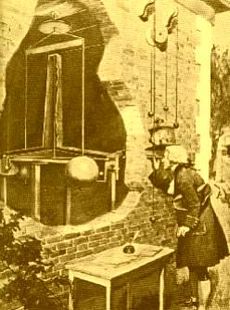
Journeying towards the Centre of Gravity
Professor Clive Speake (Professor of Experimental Physics) will give his inaugural lecture onThursday, 28th May 2009
All are welcome to attend.
Starts: 28 May 2009
Start Time: 5.15pm
Venue: Poynting Physics Large Lecture Theatre
Contact: RSVP to Karen Wright Email: k.r.wright [at] bham.ac.uk
Since the time of Newton physics has enjoyed steady progress towards a deepening understanding of the forces that are known to be at work in the Universe. However this progress is now being threatened by the problem of finding and experimentally verifying a fundamental theory of gravity at very small distance scales.
In my lecture I will briefly review the problem of unifying gravitation with the other known forces and I will describe some experiments that can be performed that may help us to address this problem.
I will describe the experimental work underway in Birmingham and the technological developments that very much carry on the tradition started by J.H.Poynting in the 19th century.
News 31/03/2009
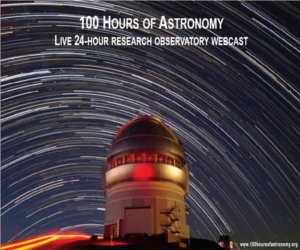
AIGO, GEO600, LIGO, TAMA and Virgo participate in ESO’s "Around the World in 80 Telescopes"
"Around the World in 80 Telescopes" is a live 24-hour webcast organized by the European Southern Observatory (ESO) as part of "100 hours of Astronomy" celebrations to mark the International Year of Astronomy 2009. This unique webcast will visit, by night and by day, some of the most advanced astronomical observatories around the globe - including the worldwide network of gravitational wave observatories and AIGO the Australian prototype gravitational wave detector. With these giant laser interferometers, researchers monitor the universe in the unique spectrum of gravitational waves - for the first time, they are "listening" to the universe and will discover unknown and distant regions. By observing gravitational waves (tiny ripples in space-time) we will gain unique insights into black holes, neutron stars and the Big Bang.
During the webcast on-site researchers at each gravitational wave observatory will explain how they are listening to the universe and introduce you to the very sophisticated technology that is needed to measure tiny gravitational wave signals: vacuum tubes, high powered lasers, mirror suspensions, absorption free optics, laser stabilization, noise reduction etc.
The webcast : 3 April 2009, 9:00 UT (Universal Time/GMT) to 4 April 2009, 09:00 UT
Stations of the tour through gravitational wave observatories and further information:
- GEO600: April 3rd, 12:20 UT, British-German project near Hanover, Germany.
- Virgo: April 3rd, 16:20 UT, Dutch-French-Italian Virgo project near Pisa, Italy.
- LIGO: April 3rd, 20:00 UT, US project in Hanford/Washington and Livingston/Louisiana.
- AIGO: April 4, 01:20 UT, Australian project in Gingin.
- TAMA: April 4, 06:00 UT, Japanese project in Tokyo.
News 10/03/2009

University of Birmingham Π Day: Understanding the Mathematics of the Universe
Pi Day is currently planned to run from 10:00 am to 5:15 pm on Saturday 14th of March 2009. Entrance and all activities are free, but due to limits on numbers certain workshops will be on a first-come-first served basis. We hope to see you there!
This event is part of the National Science and Engineering Week events at the University of Birmingham.
Space, the Final Frontier as many would say, is a spectacular place. The Universe is teeming with objects so awe inspiring in nature that perhaps one can not help but feel a little dwarfed by them. Yet this does not daunt many of those who study the Universe, trying to understand its many facets: from where it came from, to how it will die and everything in between. One of the most eminent figures from the twentieth century in this quest was Albert Einstein, who's work on gravity laid the foundations for much of what would follow in the following decades and beyond.
Given that 2009 is the International Year of Astronomy, the University of Birmingham's Astronomical Society feel that it is important to understand the role that mathematics plays in the Universe and there is no better day than on Pi Day to do this. Pi Day is the celebration of the irrational number which represents the ratio of any circle's circumference to its diameter in Euclidean space. The symbol for pi was first used in 1706 by William Jones, but was popular after it was adopted by the Swiss mathematician Leonhard Euler in 1737.
This event will feature many activities hands on activities such as rocket launching, Mars Rover building and how to build your own sextant. There will be a number of mathematics sessions, including code breaking and the shape of the Universe. The will be a chance to explore the night sky in a mobile planetarium. There are also a number of talks planned for the day. In the morning we will explore the Universe with Samuel George talking about the hunt for extraterrestrial life in "Is Anybody Out There?" and Ria Johnson looking at galaxies, far, far away in "How to build a Universe". In the afternoon we will explore the mathematics of the Universe with Dr Chris Sangwin who will be giving the afternoon talk on Pi, in "How Round is your Circle?". There will be a raffle and a number of exhibitions stands which will includes local societies and retail stalls giving you the opportunity to follow-up your interest.
For more information see the Pi Day webpages
News 06/03/2009
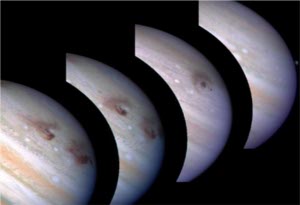
Poetry of the Night: A marvellous union between science and literature - 13th Patrick Moore Lecture
On October 2, 1605, Londoners were treated to an almost total eclipse of the Sun at around the same time that Shakespeare's King Lear was exploring humanity's relation to the cosmos. "These Late Eclipses in the Sun and Moon" (a passage from the play) begins a sophisticated discussion of that relation, based on real events in the night sky. This is just one example of the richness of astronomical allusions in English Literature that will be explored in this presentation.
The 13th "Patrick Moore" lecture is to take place on the 9th March at 7:30pm. The talk will be by David H. Levy, American comet discoverer (remember Shoemaker-Levy-9 that crashed into Jupiter a few years ago?) and author. David Levy is the host of a very popular radio show on Arizona Public radio. The talk starts at 7:30pm in the Poynting Physics Large Lecture Theatre (S02). Snacks and tea in the Study lounge from 7pm before the talk.
For more information and directions please see our talks page.
News 05/02/2009

The GEO600 gravitational wave detector tests holographic Universe
Can GEO600 hear the quantum noise of spacetime? Are we living in a holographic Universe? Are space and time grainy? Is there quantum noise in spacetime? American physicist Craig Hogan is convinced that he has found proof in the data of the German-British gravitational wave detector GEO600 and that his ideas could explain mysterious noise in the detector data that has not been explained so far. New experiments in the coming months will yield more evidence about Craig Hogan's assumptions.
To test the Theory of holographic noise , scientists from Hannover and Birmingham will shift the frequency of GEO600's maximum sensitivity towars higher frequencies. The frequency of maximum sensitivity is the tone that the detector can hear best. It is normally adjusted to offer the best chance for hearing exploding stars or merging black holes. If Craig Hogan is right the sensitivity of GEO600 would be limited at all frequencies by the same level of holographic noise. Even if it turns out that the mysterious noise is the same at high frequencies as at the lower ones, this will not constitute proof for Hogan's hypothesis. It would, however, provide a strong motivation for further study. Over the next year the sensitivity of GEO600 will be significantly improved by using 'squeezed vacuum' and by the installation of a mode filter in a new vacuum chamber.
News 30/01/2009

The University of Birmingham has joined the LOFAR-UK consortium
The University of Birmingham has joined the consortium for LOFAR-UK, which is a 'next generation' radio telescope under construction in Europe, operating in the 30-240 MHz frequency range. This radio array, with its headquarters in the Netherlands, but with antennae spread all over Western Europe, including the UK, will have an unprecedented field of view and multiple beams, and will open up a completely new phase of radioastronomy. It is the only fully-funded pathfinder for the low-frequency component of the Square Kilometre Array. Initially, LOFAR will work on five keys projects:
- Deep Extragalactic Surveys
- Transient Sources
- Ultra High Energy Cosmic Rays
- Pulsars
- The Epoch of Reionisation
Birmingham astrophysicists will be involved in the first two key projects.
News 14/11/2008

Mirror images, antimatter and time reversal - 12th Patrick Moore Lecture
In our next public talk we take a step away from the large scale astrophysics and take a detailed look at how the Universe is put together. We explore, without mathematics, the three symmetries implied in the title. These are important in science, particularly in particle physics. At the microscopic level, the laws of mechanics and electromagnetism appear to be perfectly symmetrical, but the symmetry is broken by the weak interaction, the force that allows the Sun to shine. We explain how symmetry breaking could help us to avoid being annihilated by a science-fiction antimatter alien from another world. Again at the microscopic level there is a small asymmetry between the forward and backward directions of time. On larger scales however the direction of time is crucial, and time-reversed systems generally lead to absurd situations.
The 12th "Patrick Moore" lecture is to take place on the 4th Dec at 7:30pm. The talk will be by Prof Peter Kalmus OBE (QMUL), who was one of the key scientists involved in the discovery of the W and Z particles, which provided the experimental evidence that electromagnetism and the weak interaction were aspects of the same force. The talk starts at 7:30pm in the Poynting Physics Large Lecture Theatre (S02). Snacks and tea in the Study lounge from 7pm before the talk. If clear, sky viewing with with telescopes with the help of Astrosoc members after the talk.
For more information and directions please see our talks page.
News 31/10/2008

Einstein Telescope: Gravitational Wave Observatory
The Gravitational Physics Group have received a grant of £150,000 to design a new telescope that will aid them in their quest to discover more about the dark side of the universe.
The team are part of a worldwide collaboration that is looking for gravitational waves - tiny distortions of space-time that were predicted by Albert Einstein in the early 20th Century, but have never been directly detected. This is one of the most fundamental research areas in modern science as the direct observation of these waves will allow totally new insights into physics of black holes and may provide a direct view at what happened just after the Big Bang.
Two first generation interferometric detectors, GEO 600 and Virgo, are active already in Europe - in collaboration with the three LIGO detectors in America. The University of Birmingham is already making strong contributions to the instrument development and science exploitation of these five instruments. The new Einstein Telescope will be designed by physicists over the next three years, and will be an important step towards the third generation of gravitational wave observatories. They will be a hundred times more powerful than the current detectors, increasing the volume of the universe that can be observed by a factor of a million.
Further details can be found on the Einstein Telescope webpage
News 10/10/2008
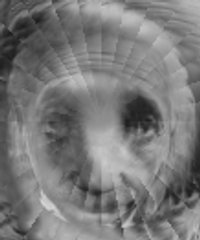
Einstein in focus: Gravitational wave astronomy and gravitational lensing
The above RAS/IOP Specialist Discussion one-day meeting will take place in London on Friday 17th October, 2008 at the Geological Society Lecture Theatre, Burlington House, Piccadilly.
This meeting will bring together the gravitational wave and gravitational lensing communities to discuss issues at the interface of these two fields of study. The main focus of the meeting is on how both strong and weak gravitational lensing will complicate the interpretation of gravitational waves detected with ground-based laser interferometers with ground-based laser interferometers (such as LIGO, Virgo and GEO-600) and LISA. In particular, the aims are:
- To discuss the challenges to the interpretation of gravitational wave data that result from strong and weak gravitational lensing;
- To consider the possible strategies that should be pursued to address these challenges;
- To identify potential synergies between gravitational wave research and gravitational lensing research.
Further details on the meeting can be found here
News 22/08/2008

Birmingham Space Day
Forty two. That was the answer to Life, the Universe and Everything proposed by Deep Thought in Douglas Adams' book the Hitchhiker's Guide to the Galaxy. But how much of the ultimate answer does the Universe actually contribute? Whilst astronomers at the University of Birmingham are likely unable to find the answer to that question, at their upcoming event, Space Day, they hope to be able to answer many other more day-to-day questions, such as how does a telescope work? What can I look at in the sky tonight? How did NASA get their rovers on Mars safely?
This event, aimed at all ages of the general public, will feature talks by researchers from the School of Physics and Astronomy, including Dr William Chaplin on the "Music of the Sun" and Dr Somak Raychaudhury on "Einstein's Outrageous Legacy - Black Holes, Cosmic Illusions and Dark Energy", as well as interactive workshops which tackle telescope making, air rocket creation and launching, and even making Mars rovers out of little more than cardboard and sellotape! Other activities such as a tour of the night sky in a mobile planetarium, a tour of the department's astronomical and space laboratory facilities, a chance to see how many cosmic rays pass through you every second and a raffle are planned for the day.
Space Day is currently planned to run from 10:00 am to 5:15 pm on Saturday 4th of October 2008. Entrance and all activities are free, but due to limits on numbers certain workshops will be on a first-come-first served basis. We hope to see you there! For more information see the space day site.
News 01/07/2008
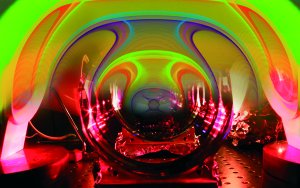
"Can you hear black holes collide?" at the Royal Society Summer Science Exhibition 2008
A team of gravitational-wave researchers has been selected to exhibit at the Royal Society Summer Science Exhibition. Researchers from the Universities of Birmingham, Cardiff, Glasgow and Southampton are joining forces with colleagues from the Albert Einstein Institute in Potsdam, Germany, and designers from Milde Science Communication to showcase the exciting science associated with Einstein’s general theory of relativity, black holes and gravitational waves.
The exhibit, entitled "Can you hear black holes collide?", introduces the main ideas behind Einstein’s relativistic theory of gravity. Through a number of hand-on exhibits visitors get an understanding of how space and time are flexible, and why this leads to gravity. Black holes are explained. A table-top laser-interferometer is used to demonstrate the technology used to search for the tiny ripples in space and time that bathe the Earth, the gravitational waves. State-of-the-art supercomputer simulations of colliding black holes are demonstrated. The challenging task of digging weak gravitational-wave signals out of noisy detector data is introduced via a fun game where visitors can test their skill at listening for actual black hole signals.
Running from 30th June to 3rd July 2008, the Royal Society Summer Science Exhibition is a premier annual showcase for scientific excellence in the UK. Research teams are invited to bid to provide an exhibit on their work, and after a stiff competition the best are selected for display to scientists, the media and the general public.
The research is funded by the Science and Technology Facilities Council in the UK and the Max Planck Gesellschaft in Germany.
News 26/06/2008
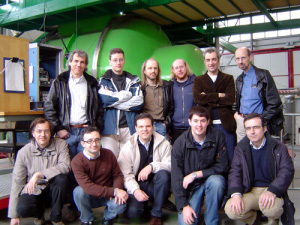
Scientists running the two most sensitive Gravitational Wave Detectors in Europe meet at the University in Birmingham
The physicists from the GEO600 detector (constructed and operated by a German-British Collaboration) and the VIRGO detector (constructed and operated by an Italian-French Collaboration) meet regularly to exchange their knowledge and experience. Over the last years a very fruitful collaboration between the commissioners of both Laser interferometers was establish. Within the European ILIAS framework
The Gravitational Wave experts will meet in Birmingham at the 10th and 11th of July. The meeting will focus on improvements and future upgrades of the GEO600 and VIRGO interferometers, in order to make these instruments even more reliable and sensitive.
News 06/06/2008
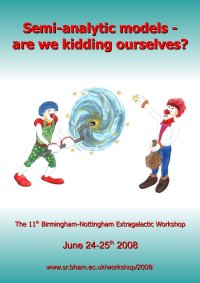
Extragalactic Workshop 2008
Since 1998, the extragalactic group at Birmingham has held regular Workshops to bring together observational and theoretical astronomers for two days to discuss a current "hot topic" in extragalactic astronomy. This year, the 11th Workshop will be held on June 24-25th on the topic: Semi-analytic models - are we kidding ourselves?
These models have been developed over the past 15 years to help astrophysicists understand the formation and evolution of galaxies. Although "semi-analytic" models are now very popular, many astronomers remain suspicious of them, and the aim of the meeting is to bring together enthusiasts and sceptics to examine what we can learn from the successes and failures of such models. Some lively debate is guaranteed!
News 23/05/2008
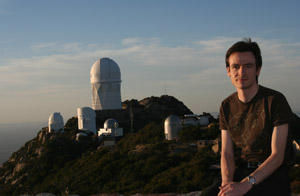
Observing the evolved stellar populations in galaxy clusters
In mid May, Dr. Chris Haines visited the NOAO Kitt Peak National
Observatory in Arizona, USA, to observe a dozen galaxy clusters using
recently commissioned wide-field near-infrared instrument NEWFIRM on the 4m
Mayall telescope. This near infrared data provides a direct measure of the
overall mass in the form of stars in the virialized regions of the
clusters, and we will compare the distribution of stars within the
clusters with the underlying dark matter, as measured using weak lensing.
We will also combine this data with incoming mid-infrared data from the
Spitzer infrared space telescope, to find dusty starburst galaxies within
the cluster, to attempt to unravel the processes which transfrom infalling
starforming spiral galaxies into the "red and dead" elliptical galaxies
thad dominate local clusters. These data were obtained as part of LoCuSS,
a large multi-wavelength survey of ~100 galaxy clusters at redshifts from
0.15-0.3.
News 09/05/2008

The Vast majority of galaxies are within groups of galaxies and they are probably the best laboratories to study the interaction and evolution of galaxies.
Ali Dariush, a postgraduate student in the Extragalactic group and his supervisor Dr. Somak Raychaudhury are leading the optical part of XI-project, a multi-wavelength survey of 25 redshift selected groups of galaxies with the aim of understanding their physical properties and dynamics.
Ali's last observing run was in May 2008 where he used the wide field CCD camera installed on 100 inch du Pont telescope at Las Campanas observatory , Chile for mosaic imaging of a sample of 12 XI-groups in B and R bands.
The XI-project is a joint project between the Extragalactic group of Birmingham University and Carnegie institution of Washington, USA.
News 15/04/2008

Space Weather and Lunar Exploration - 10th Patrick Moore Lecture
Space is a dangerous place for humans, once we step beyond the protection of the Earth's atmosphere and magnetic field. Galactic cosmic rays and bursts of charged particles from the Sun damaging to health happen with alarming frequency - the Apollo astronauts were lucky. Understanding the physics of radiation from distinct source in space will be useful to help future space voyagers plan journeys in greater safety, and produce effective shields for these unavoidable events on journeys to Mars or beyond.
The 10th "Patrick Moore" lecture is to take place on the 8th May at 7:30pm. The talk will be by Dr Mike Hapgood, who is the Head of the Space Environment Group at the Rutherford Appleton Laboratory in Oxfordshire. The talk starts at 7:30pm on Thursday 8th May in the Poynting Physics Large Lecture Theatre (S02). Snacks and tea in the Study lounge from 7pm before the talk. If clear, sky viewing with telescopes with the help of Astrosoc members after the talk.
For more information and directions please see our talks page.
This series of talks is funded by STFC http://www.stfc.ac.uk/, (Public Understanding of Science grant), and is organised by the School of Physics and Astronomy http://www.ph.bham.ac.uk and the Astronomical Society of UoB
News 07/03/2008
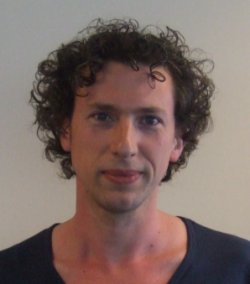
Artist in residence
Tom Espiner, an actor and co-director of Sound and Fury Theatre Company , is working with the Astrophysics department as an artist-in-residence until June 2008.
The project is an opportunity to research ideas for a performance piece, which will focus on astronomy and the human interaction with the universe.
Sound and Fury has previously staged work in total darkness with surround sound design - immersing their audiences in an environment, which harnesses the power of the imagination and heightens the aural sense. Tom is interested in using these methods to explore ideas of light and darkness in astronomy. He also wants to frame the scale of the universe in a different perspective by paralleling the cosmic with everyday experience.
Tom is keen to explore metaphor, analogy and patterns in both art and science. The idea of pattern seeking and pattern interpretation is both a scientific and artistic pursuit. Where these pursuits share common ground and where they diverge may provide fertile grounds for discussion.
News 26/02/2008
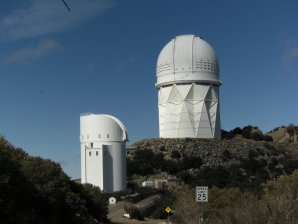
Observing Galaxy Clusters
In mid February, Dr. Tom Targett and postgraduate student Vicky Hamilton-Morris visited the NOAO Kitt Peak facility in Arizona, USA, to observe galaxy clusters in the infra-red, using the 4m Mayall telescope. The hope was to add to previous IR observations taken at the 4m Victor M. Blanco telescope in Chile. These clusters were being observed as part of LoCuSS, a large multi-wavelength survey of ~100 galaxy clusters at redshifts from 0.15-0.3.
News 31/01/2008
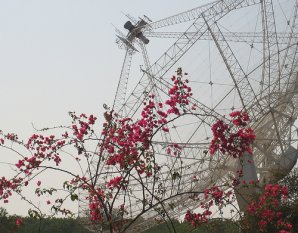
Astronomers search for radio emission from Brown Dwarfs
Dr Ian Stevens and postgraduate student Samuel George travelled to India to use the Giant Metrewave Radio Telescope (GMRT) as part of their continuing work investigating the nature of brown dwarfs. Their targets were 10 L dwarf stars, otherwise known as brown dwarfs (or ultra-cool stars). The GMRT is the world's most sensitive radio telescope at decametric wavelengths and these objects are expected to produce emission at these frequencies. The interiors of these stars are expected to be fully convective, suggesting that they will be capable of generating a magnetic field by a dynamo process. Particles are expected to become trapped in this field and due to a process known as an electron-cyclotron maser strong, and possibly flared, emission is expected.
News 11/05/2007
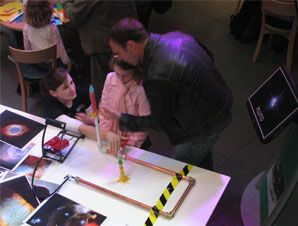
Rockets @ the BBC Birmingham's Public Space
Members of the Astrophysics & Space Research Group and the University's
Astronomical Society took over the BBC Birmingham's Public space for two
weekends of astronomy related activities.
This was part of the
celebrations for the 50th Anniversary of the BBC television show "The
Sky at Night" - a show that is produced at the Birmingham centre. Over
the course of four days some 2,000 members of the general public were
treated to a variety of fun activities. These events included the chance
to build and launch their own rockets that were propelled upwards by
compressed air, land the space shuttle on a simulator, look at
photographic plates of the Universe and hunt around the BBC centre for
the planets of our solar system.
News 20/01/2007
STEREO News Update
Following the final orbital manouevre of the STEREO-B spacecraft, the door covering the Heliospheric Imager instrument on this spacecraft was opened on 11th January and we took first-light images with the cameras. We were greeted by a wonderful surprise! Because the spacecraft is not yet in its final pointing attitude we had a spectacular view of Comet McNaught (designated C/2006 P1) the brightest comet in over 40 years, in the HI-1B camera. Over the subsequent days the spacecraft was rotated about the Sun direction until the comet was no longer in the field-of-view of this camera, however at around the same time it had entered into the field of the HI-1 camera on spacecraft A and we were able to follow it here for several weeks. It is currently still visible in the wider angle HI-2B camera, albeit at lower resolution.
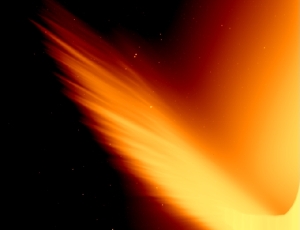
This image (on the right) shows a close-up of the details in the tail of the comet, with stars
in the background. The core, or "coma", of the comet is just off the bottom
right of the picture and is so bright it would cause serious saturation of the CCD
detector if it were in the field-of-view.
During the past few weeks, whilst we have been working on the commissioning
and calibration of the instruments, we have made a number of other important
observations including detection of asteroids down to 12th magnitude. Most
importantly, we have already shown that we are capable of meeting the prime
science requirements of the mission by detecting a number of Coronal Mass
Ejections (CMEs) and following their propagation across the field-of-view of
the HI-1 camera and into HI-2.
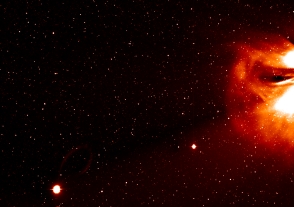
This picture from HI-1A shows a CME being ejected from the Sun. The CMEs
are typically 1% of the brightness of the coronal background, which has been
subtracted off. The two really bright objects in this image are the planets Venus and
Mercury.
STEREO spacecraft B had its second and final lunar "swing-by" on 21st January, so both spacecraft are now in heliocentric orbits around the Sun and will gradually separate from the Earth during the coming months giving a truly "stereo" view of the CMEs.
For more information on STEREO see [here].
News 26/12/2006
First STEREO images
STEREO (Solar TErrestrial RElations Observatory) is the third mission in NASA's Solar Terrestrial Probes program and it consists of
two nearly identical space-based observatories. One of these observatories is placed ahead of the Earth's orbit and the other one
trails behind. The Heliospheric Imager (HI) instruments on-board STEREO have been developed by a UK-led consortium from the
University of Birmingham and the Rutherford Appleton Laboratory, as well as the Centre Spatial de Liege, Belgium, and the
Naval Research Laboratory, USA.
The two spacecraft were successfully launched on 25th October 2006 and following the final orbital manouevre of the STEREO-A spacecraft,
the door covering the HI instrument on this spacecraft was opened on 13th December, allowing imaging. We were absolutely delighted
with the quality and clarity of the "first light" images from both cameras in HI-A
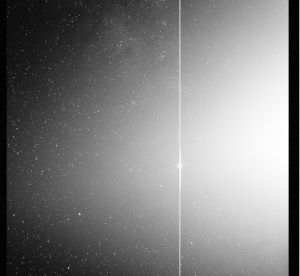
This (image on right) is a 50 sec exposure with the HI-1A camera. The field-of-view is 20 degrees across and the centre of the
Sun is about 4 degrees off the right hand side of the picture. The glow on the right hand side is the extended F-Corona of the Sun,
otherwise known as the Zodiacal Light, caused by scattering of sunlight from dust particles in interplanetary space. The profile of
this Coronal background is exactly as predicted without any significant instrumental background. The very bright object with the
vertical streaks is Venus. As expected this saturates the pixels of the CCD detector locally and there is "bleeding" of the charge up
and down the CCD columns.
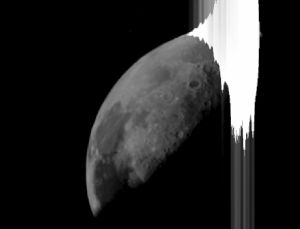
On 15 Dec both spacecraft had their first lunar "swing-by". STEREO-A had a closest approach to the Moon of 5,600 km, resulting in its escape into heliocentric orbit. About 20 mins after this the Moon appeared in the field of the HI-2 camera from behind the baffles. The image is a 2 sec exposure. The bright crescent of the Moon is causing serious saturation of the CCD on the right hand edge but we have some nice views of the dark side.
For more information on STEREO see [here].
News 17/12/2006
Fowler Astronomy Prize awarded to researcher
The Royal Astronomical Society have awarded the 2007 Fowler Astronomy
Prize to Dr. Graham P. Smith from our Astrophysics and Space Research
Group.
Two Fowler Prizes are awarded annually to individuals who have made a
particularly noteworthy contribution to the astronomical and geophysical
sciences at an early stage of their research career.
Dr. Smith's award recognises his achievements in advancing our
understanding of the distribution of dark matter in galaxy clusters, and
the impact of his work on attempts to measure dark energy, the mysterious
driving force behind the current accelerating expansion of the Universe.
Smith currently devotes most of his research time to leading the Local
Cluster Substructure Survey (LoCuSS), a new multi-disciplinary
collaboration, spanning Europe, USA, Canada, Japan and Taiwan.
For more information on the award please see
[ras.org.uk]
and for more on Dr Graham P. Smith see his [who's who entry].
News 11/12/2006
Black Holes and White Rabbits - the magic of astronomy
The 5th Patrick Moore lecture, one of a series organised jointly
between the School of Physics and Astronomy and Astrosoc (the
University's Astronomical Society), took place last Thursday. We had the
great honour of having the 10th Astronomer Royal for Scotland, Prof John
Brown, along to give this talk.
Prof John Brown is not just an astronomer but also an accomplished
magician. Given his title, "Black Holes and White Rabbits", we were
expecting to be amazed, and the crowd of over 200 people from the
University and general public was not disappointed. He used his skills as
a magician to good effect, as he showed how one can visualize complex
astrophysics by using illusion. He did conjure something out of his top
hat, but instead of a white furry animal, he produced an entire Universe
for us all to see and wonder at.
The lecture series funded by the Particle Physics and Astronomy Research
Council (PPARC).
For more information about the group's outreach activities see our
outreach pages.
News 01/12/2006
Astrosoc - Best Student Physics Society in 2006
The University of Birmingham Astronomical Society was recently declared
to be the best student physics society in the country. This annual award
was presented by Nexus, the student wing of the Institute of Physics,
and reflects the continuing hard work by the society.
"Astrosoc" is run by students, and membership is open to all students
within the University. Recently, the society started work in
collaboration with the Astrophysics and Space Research Group,
to deliver a series of PPARC-funded evening lectures. These, along with
other public outreach work, are seen as key factors in this success. For
more information about the society please see [www.astrosoc.org.uk]
News 12/10/2006
Hinode Satellite Successfully Launched
The Solar-B satellite was successfully launched from Japan�s Uchinoura Space Centre on September 23rd at 6:36 a.m. (Japanese Standard Time). Following the launch Solar-B was renamed Hinode (meaning �sunrise�). The Hinode mission comprises three coordinated instruments � an optical telescope, an EUV imaging spectrometer and an X-ray/EUV telescope � which together will investigate the interaction between the Sun�s magnetic field and its corona. This will result in an improved understanding of the mechanisms that give rise to solar magnetic variability and how this variability modulates the total solar output and creates the driving force behind space weather. The Astrophysics and Space Research Group has been a major contributor to the UK-led EUV imaging spectrometer (EIS). We were responsible for the design and manufacture of the lightweight Carbon Fibre Reinforced Plastic (CFRP) structure of the instrument, for the vacuum door that protects the optical filter at the entrance aperture of the telescope, and for the thermal design and modeling of the instrument. Opening of the aperture doors and �first light� for the various telescopes is expected to take place around the end of October.
News 26/06/2006
Secrets of fossil galaxy clusters
Many galaxies reside in galaxy groups, where they experience close encounters with their neighbours. These interactions cause large galaxies to spiral slowly towards the centre of the group, where they can merge to form a single giant central galaxy, which progressively swallows all its neighbours. If this process runs to completion, and no new galaxies fall into the group, then the result is an object dubbed a 'fossil group', in which almost all the stars are collected into a single giant galaxy, which sits at the centre of a group-sized dark matter halo. The presence of this halo can be inferred from the presence of extensive hot gas, which fills the gravitational potential wells of many groups and emits X-rays.
Taking advantage of the high sensitivity of ESA's XMM-Newton and the sharp vision of NASA's Chandra X-Ray space observatories, a team of astronomers at the Astrophysics and Space Research group studied in detail the physical features of the most massive and hot known fossil group, with the main aim to solve a puzzle and understand the formation of massive fossils. In fact, according to simple theoretical models, they simply could not have formed in the time available to them! The XMM-Newton and Chandra X-ray observations, combined with optical and infrared analyses, revealed that group sits within a hot gas halo extending over three million light years and heated to a temperature of 50 million degrees, mainly due to shock heating as a result of gravitational collapse. Such a high temperature, about as twice as the previously estimated values, is usually characteristic of galaxy clusters.
For further information please see this ESA article
News 01/06/2006
Extragalactic Workshop on "Substructure in Dark Matter Halos"
The cold dark matter (CDM) model reproduces well the observed large scale structure of the local universe, however on smaller scales non-linear collapse of dark matter halos and the presence of baryons complicate the picture severely. How does the hierarchical assembly of dark matter halos modify the galaxies and gas trapped in those halos? What is the relationship between baryonic structures, and the underlying substructure of dark matter halos? Is the substructure of dark matter halos consistent with CDM? This Workshop will address these questions, emphasising the relationship between dark and luminous substructure.
For further information please see the workshop pages
News 24/04/2006

Chandra X-ray image of the hot gas in NGC 2276 (left),
and X-ray contours overlayed on an optical image (right).
The transforming group spiral NGC 2276
Conventional wisdom holds that stripping of gas from galaxies by
interactions with the hot gas in galaxy groups is an inefficient
process. Chandra X-ray data by Rasmussen & Ponman of the starburst
spiral NGC 2276 in a small galaxy group is challenging this
assumption. The data reveal a shock front ahead of the galaxy (to the
right in the X-ray image shown), indicating that NGC 2276 is moving
through the surrounding group gas at supersonic speeds. There is also
a tail of gas behind the galaxy, stripped from NGC 2276 by the
surrounding gas due to this motion. This interaction removes the
galactic gas from which new stars would form, eventually leading to
the transformation of this strongly star-forming galaxy into a
quiescent system.
The mass of gas in the tail indicates that NGC 2276 could be losing
all its gas within the next billion years. The result that stripping
of galactic gas can occur so rapidly in groups, where most galaxies
reside, will help to elucidate which processes are driving the
evolution of a large fraction of galaxies in the Universe.
News 20/02/2006

The pictures above shows X-ray contours overlaid on an optical
image (left) and an X-ray temperature map (right) of the cluster.
The merging cluster Abell 2255
An X-ray image of the elongated cluster of galaxies Abell 2255 taken with the XMM-Newton X-ray observatory by Sakelliou & Ponman shows clear signs that this system is the result of a collision between two progenitor clusters. The X-ray emission from the cluster, shown by the contours on both the images (to the right), is extended east-west, which is evidently the collision axis. Unlike normal clusters, the X-rays do not peak on a bright central galaxy. The temperature of the hot gas responsible for the X-ray emission, shown in the map on the right, reaches 108 K (1 keV is equivalent to 1.16x107 K), and has a complex asymmetrical structure. Cluster collisions such as this are the most energetic events in the Universe since the Big Bang.
Further recent articles on this:
News 22/11/2005

The picture above shows an aerial view of the
L-shaped GEO 600 detector (the detector arms
have been marked with red colour).
The direct detection of gravitational waves is one of the grand experimental challenges of today. After more than three decades of research and development in gravitational-wave detectors, at last, the first detection of a gravitational wave on Earth is expected in the near future. You can read more or less interesting opinions on that in The Times Online (2005), the BBC (2005) and even on Slashdot.
Five such instruments are starting to take data: GEO 600: a British-German detector, located in Hannover, Germany, LIGO three large detectors in the United States, run by a large international science collaboration, the LIGO Science Collaboration (LSC), the VIRGO and a slightly smaller detector in Japan: TAMA.
Further recent news articles on gravitational wave detection:



